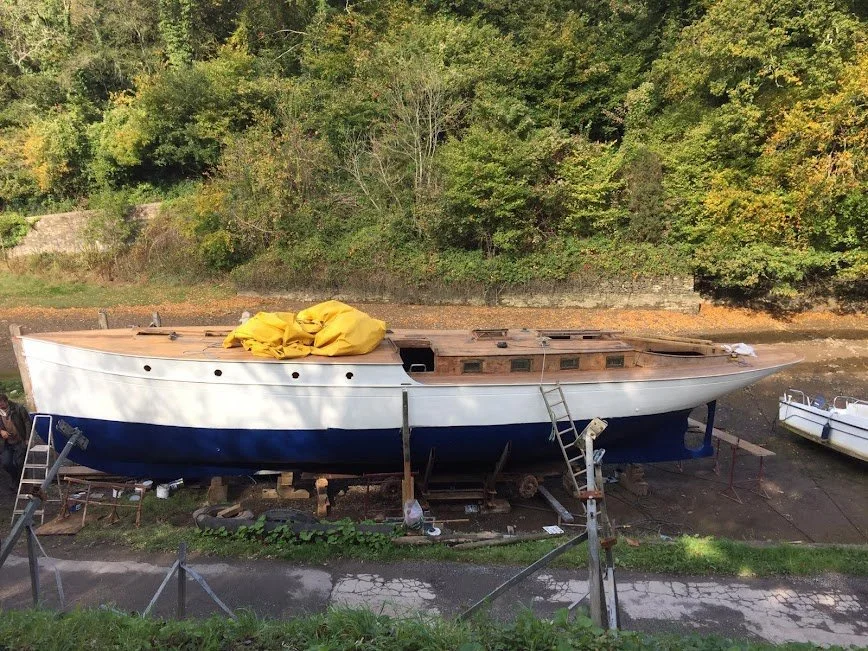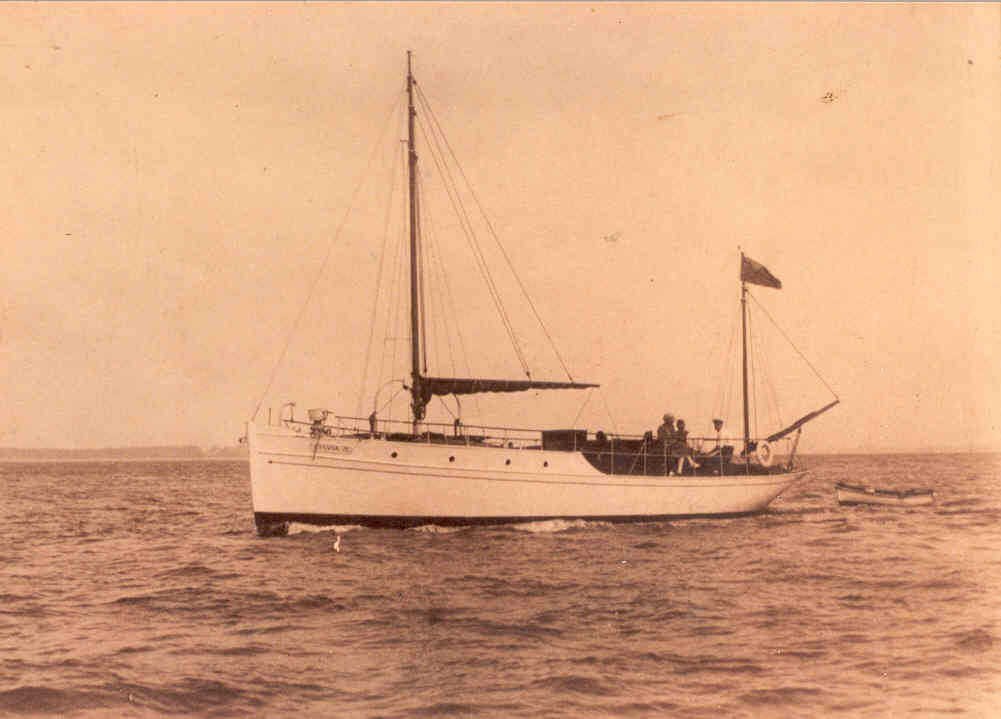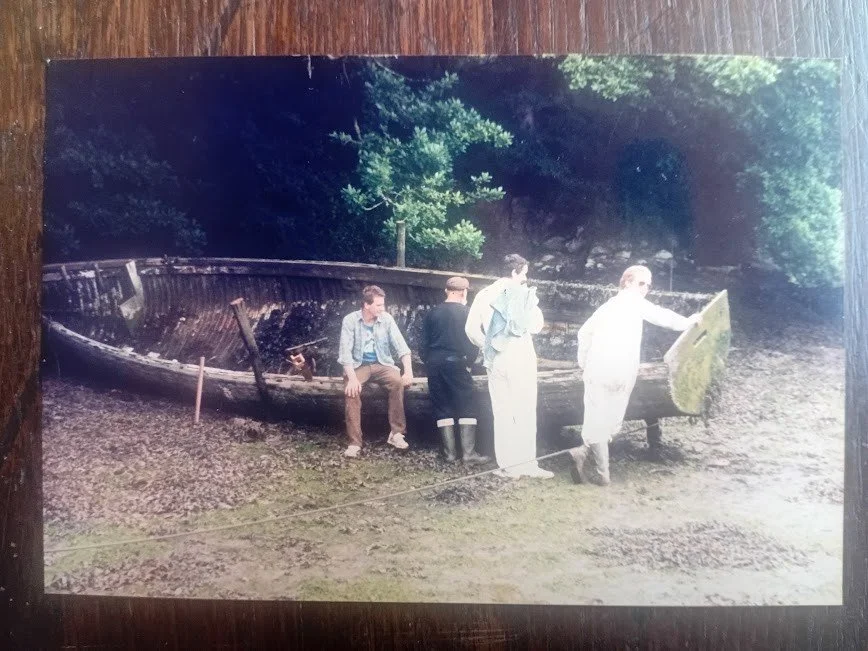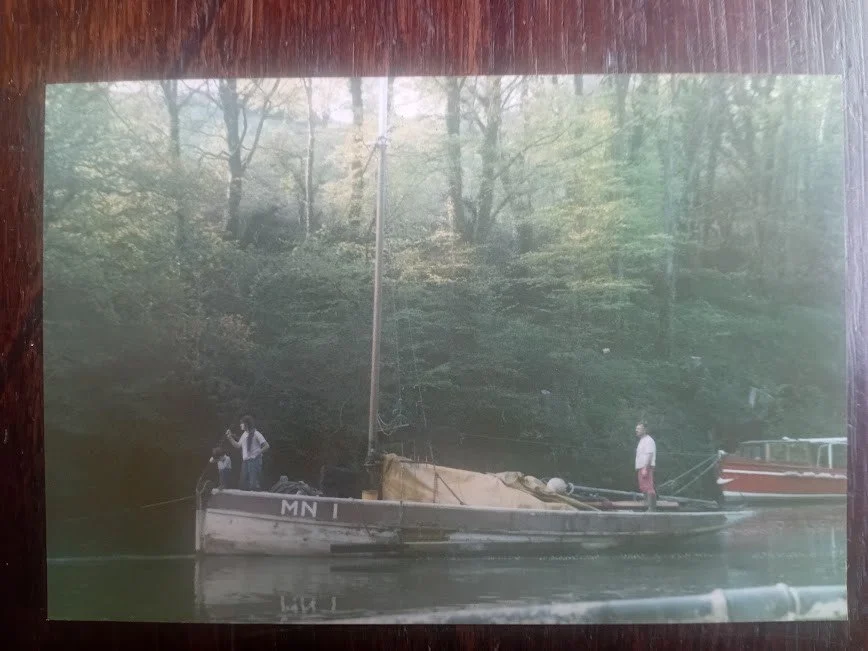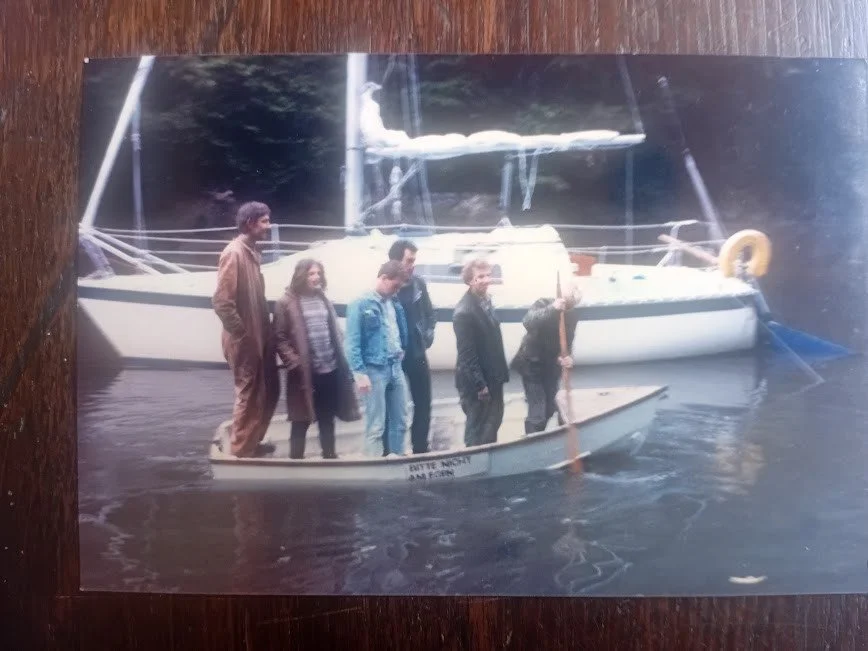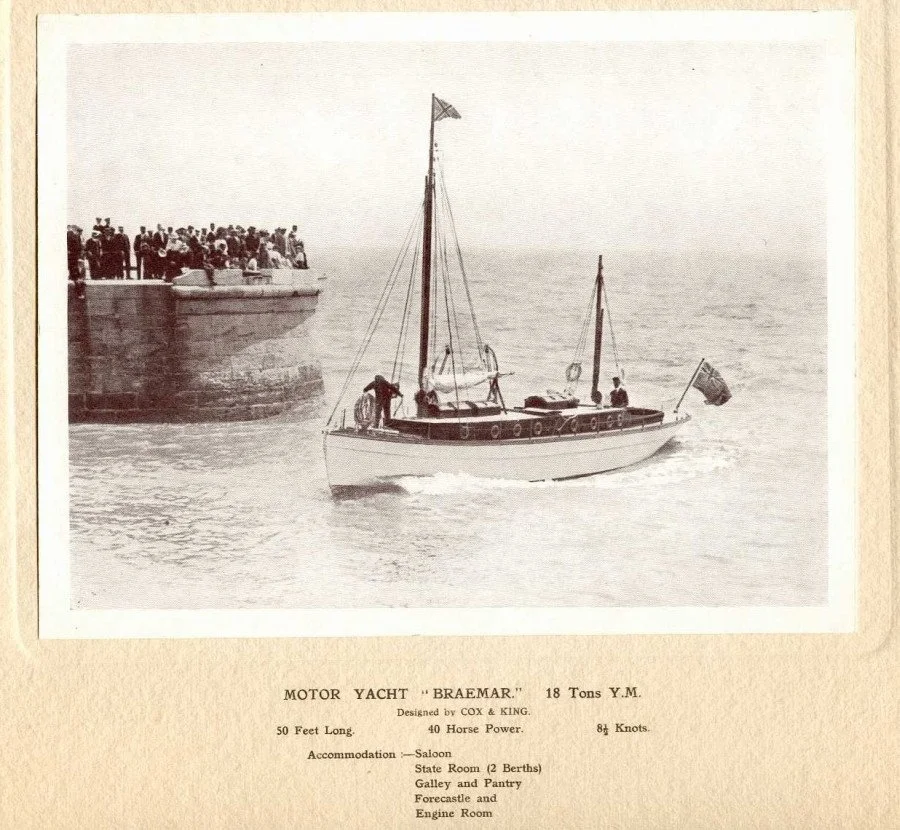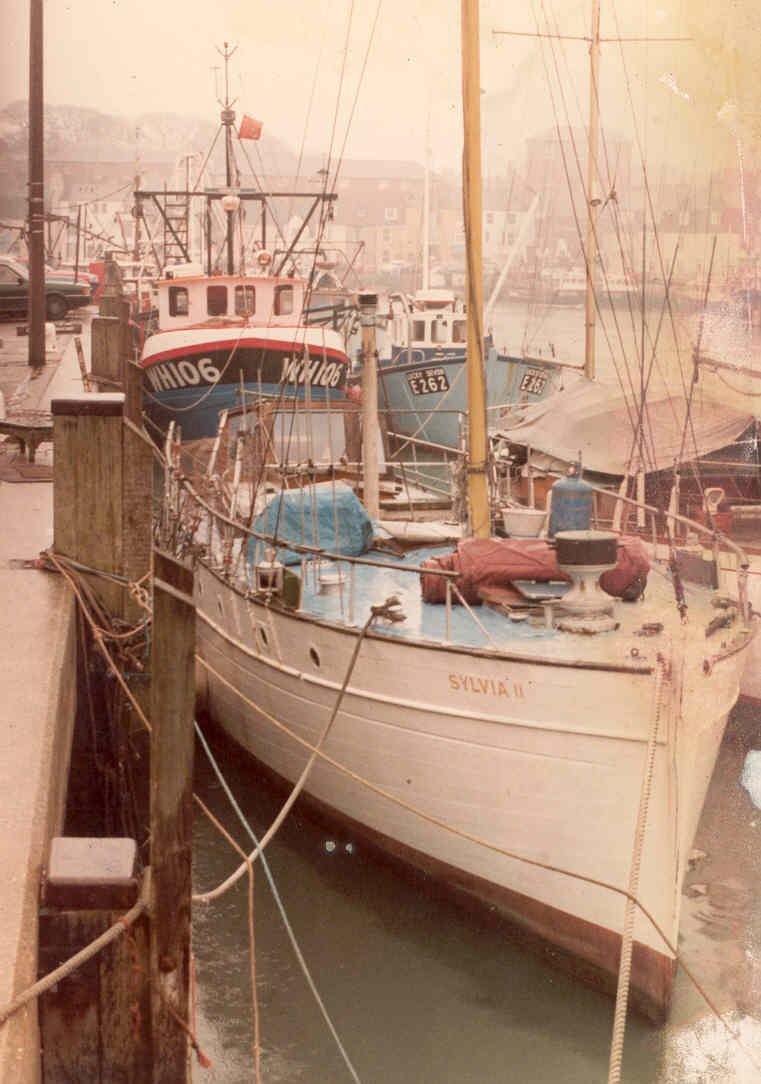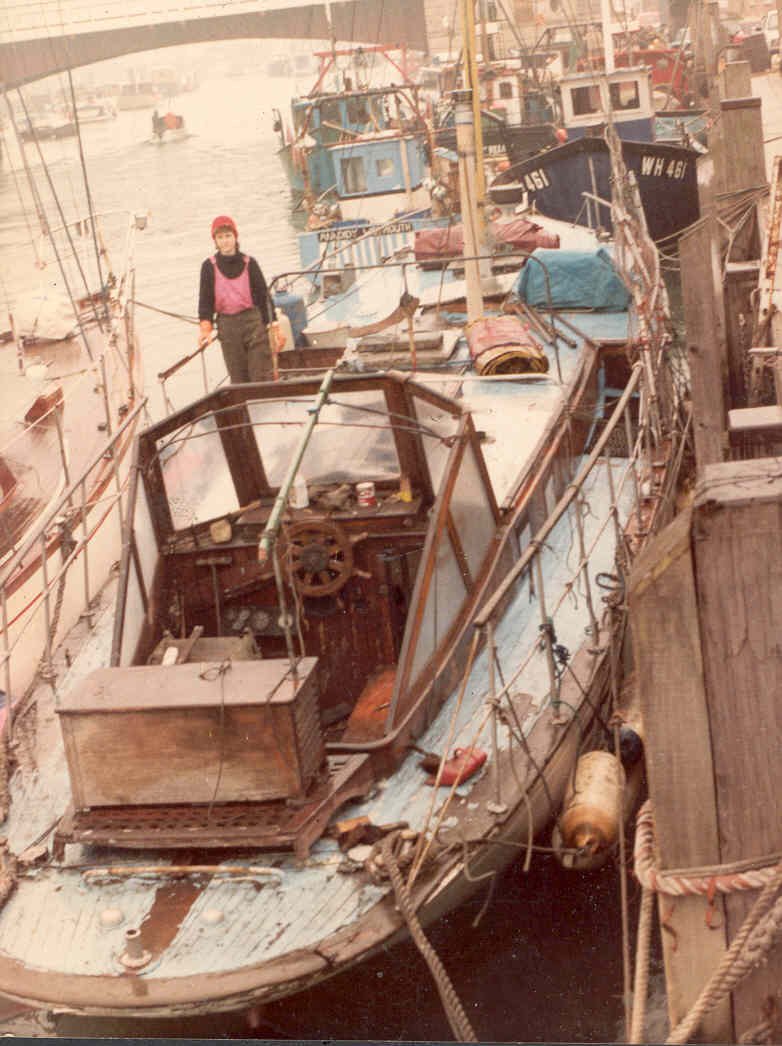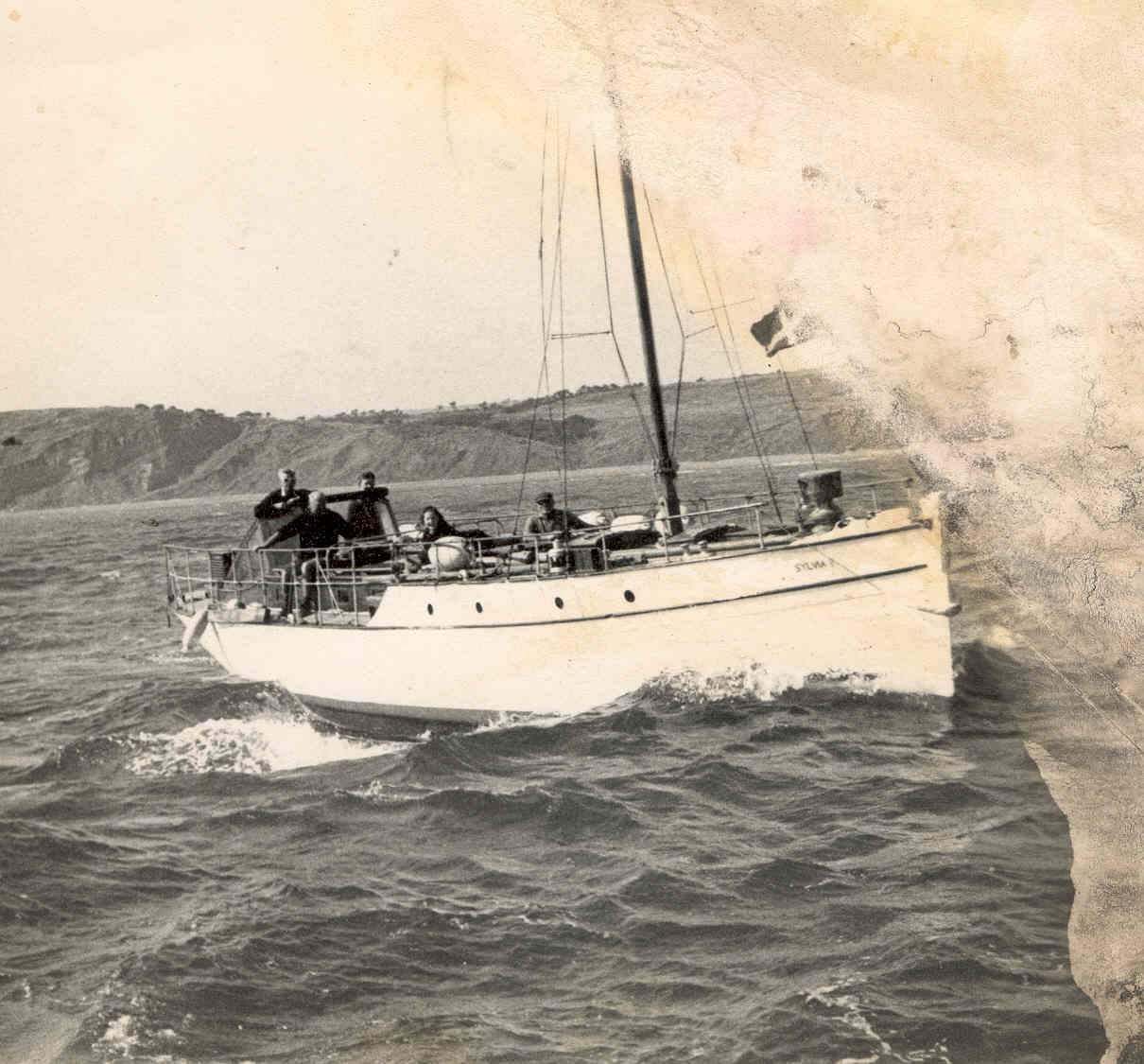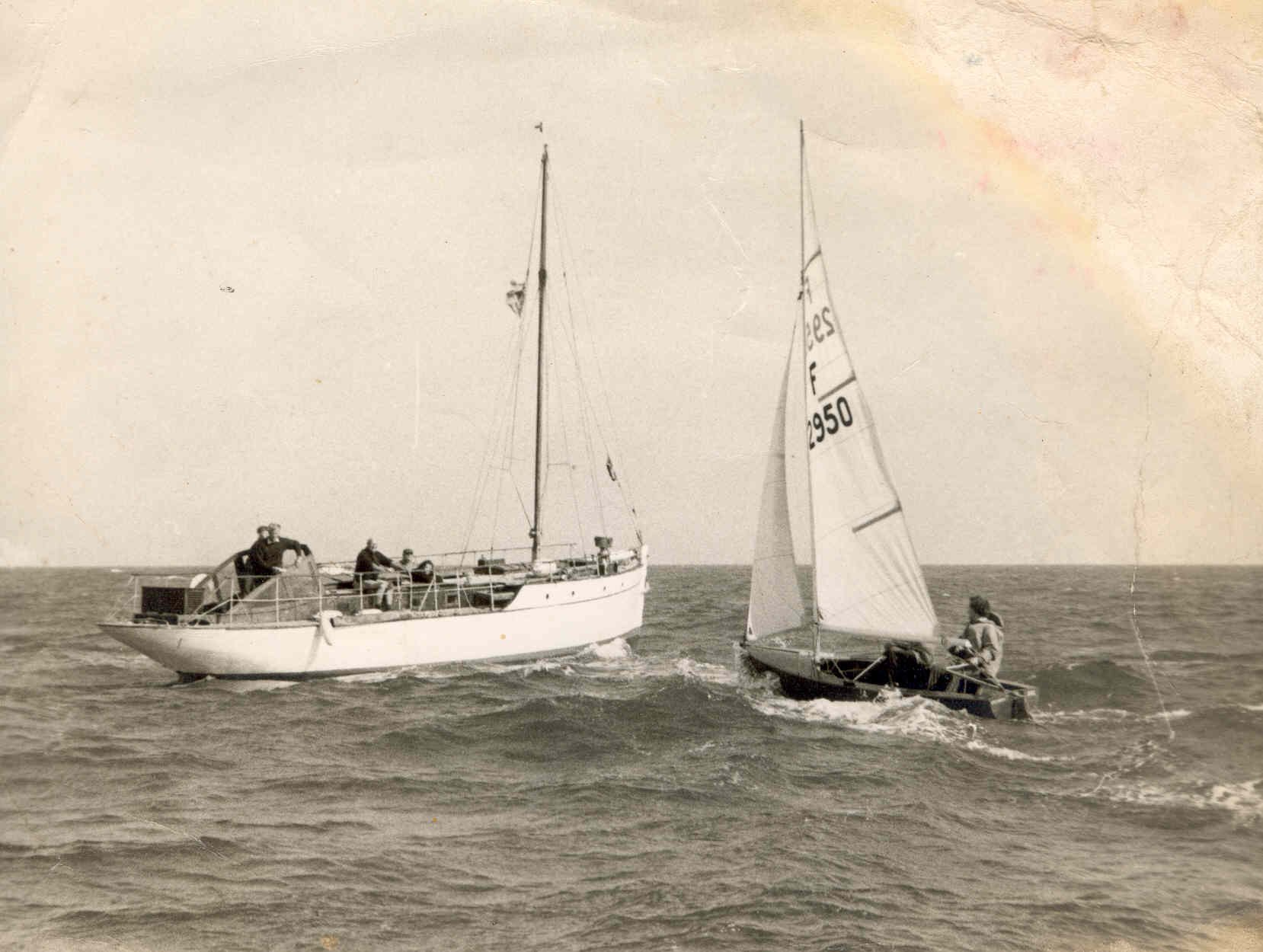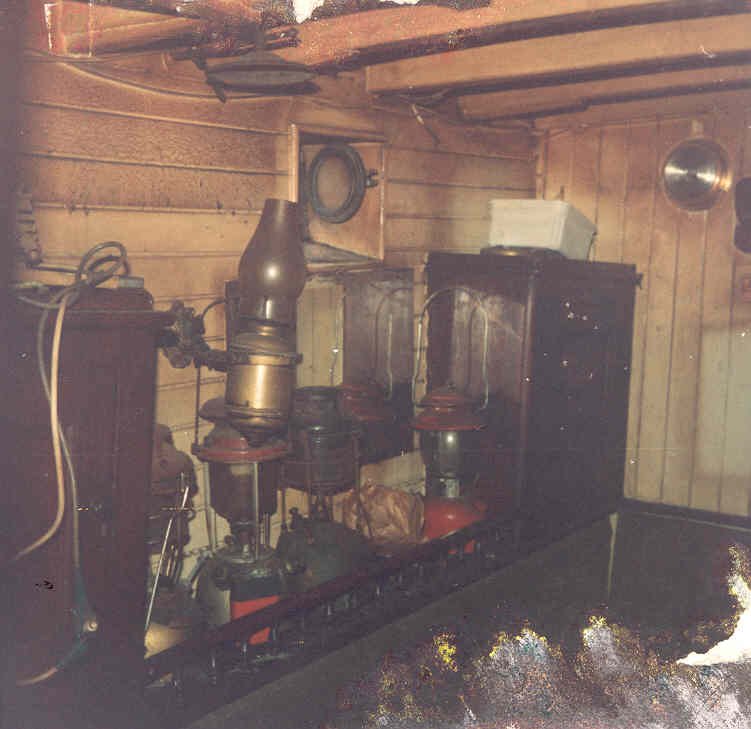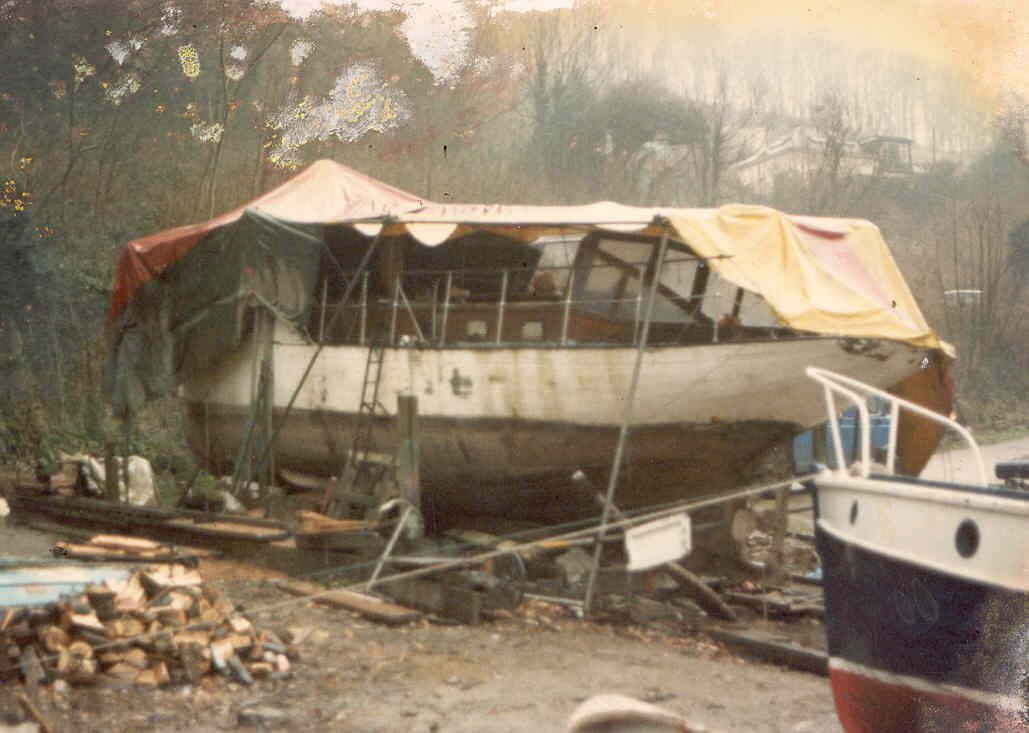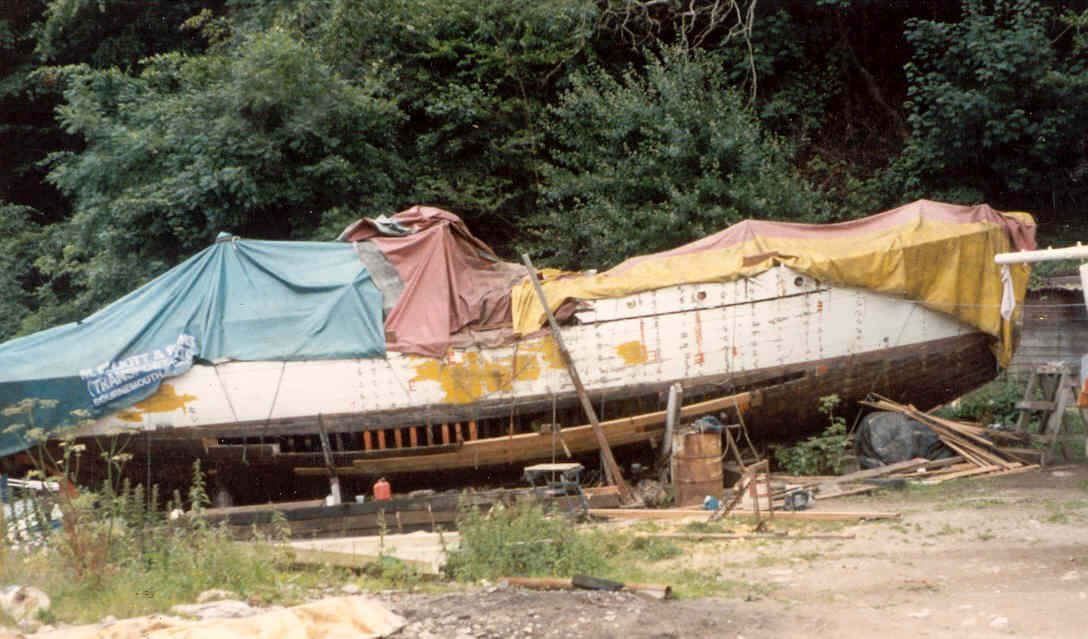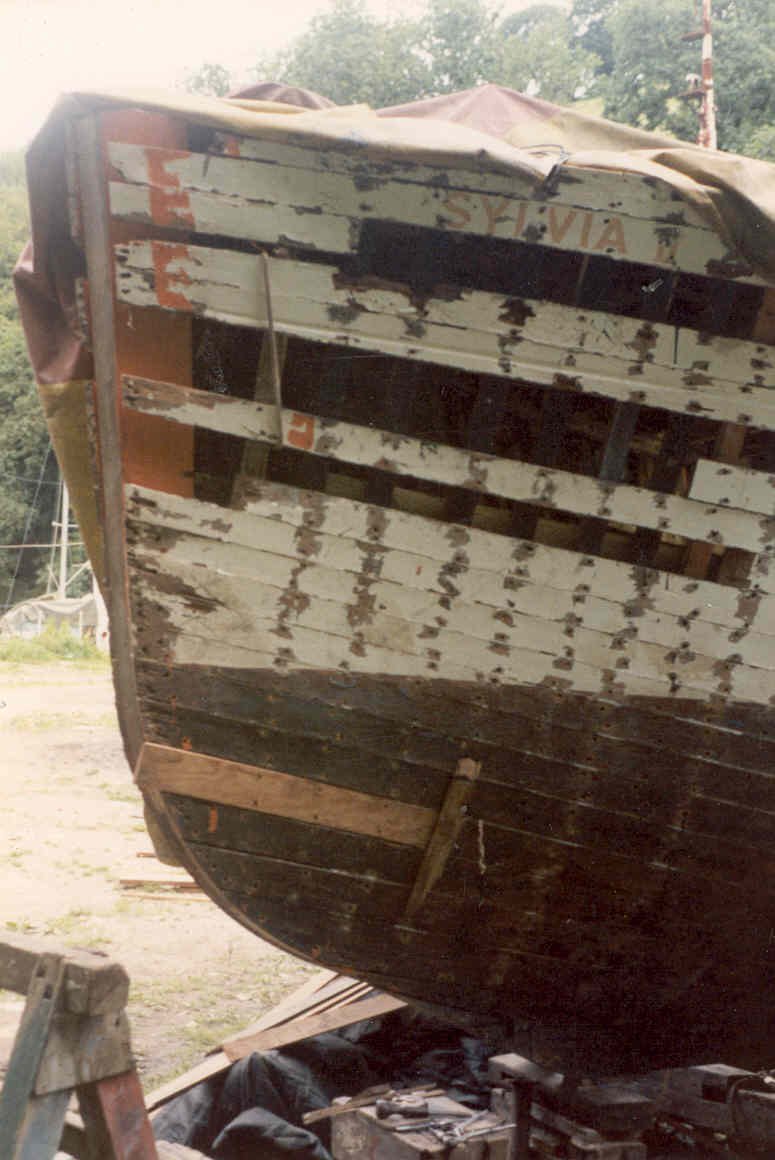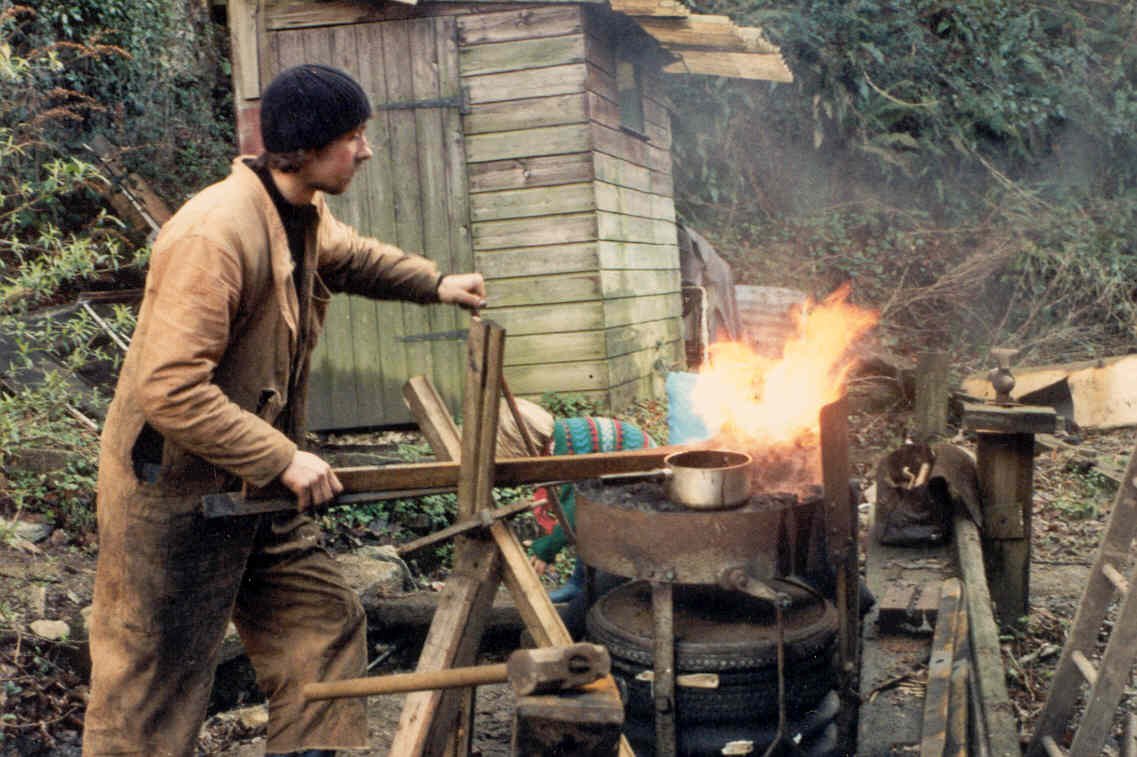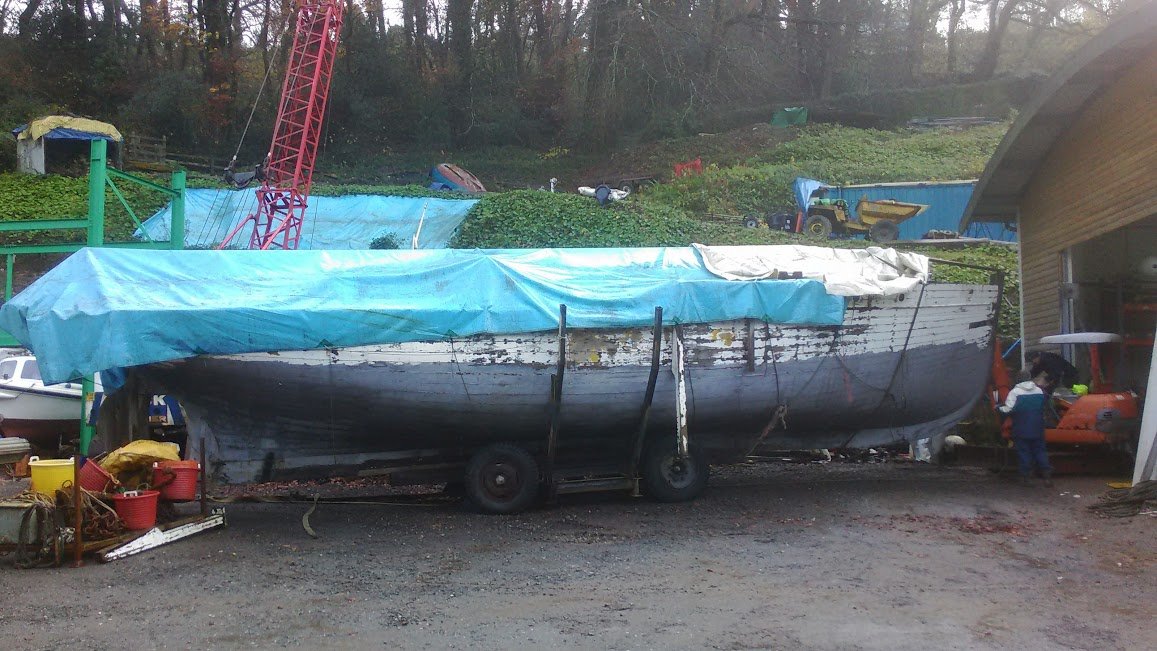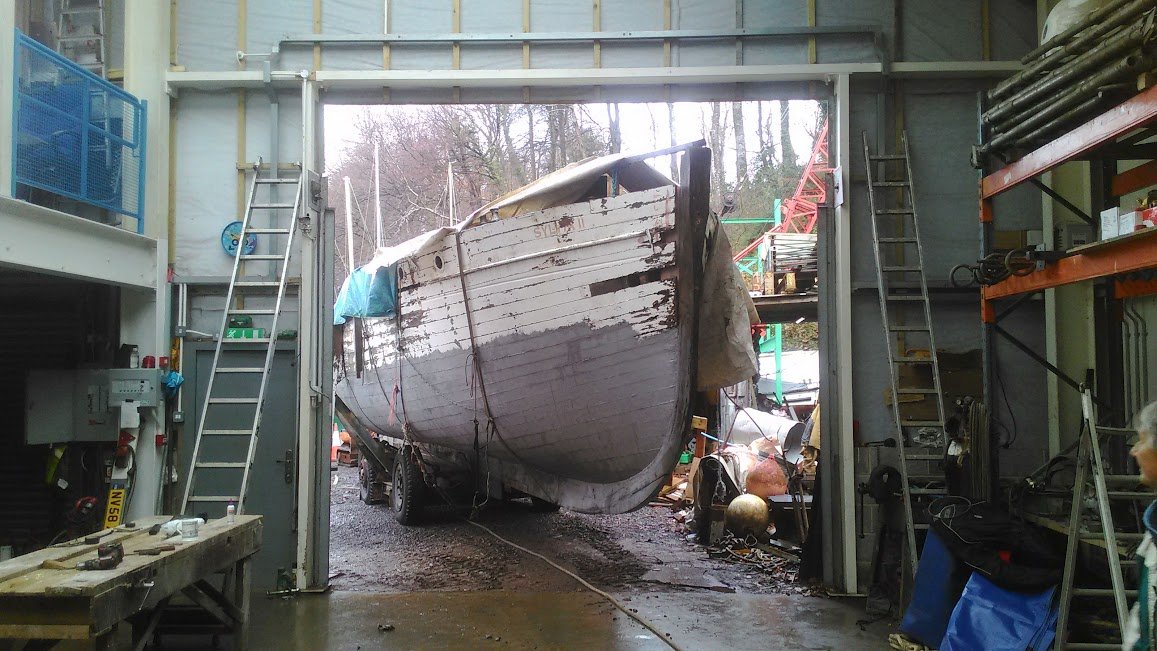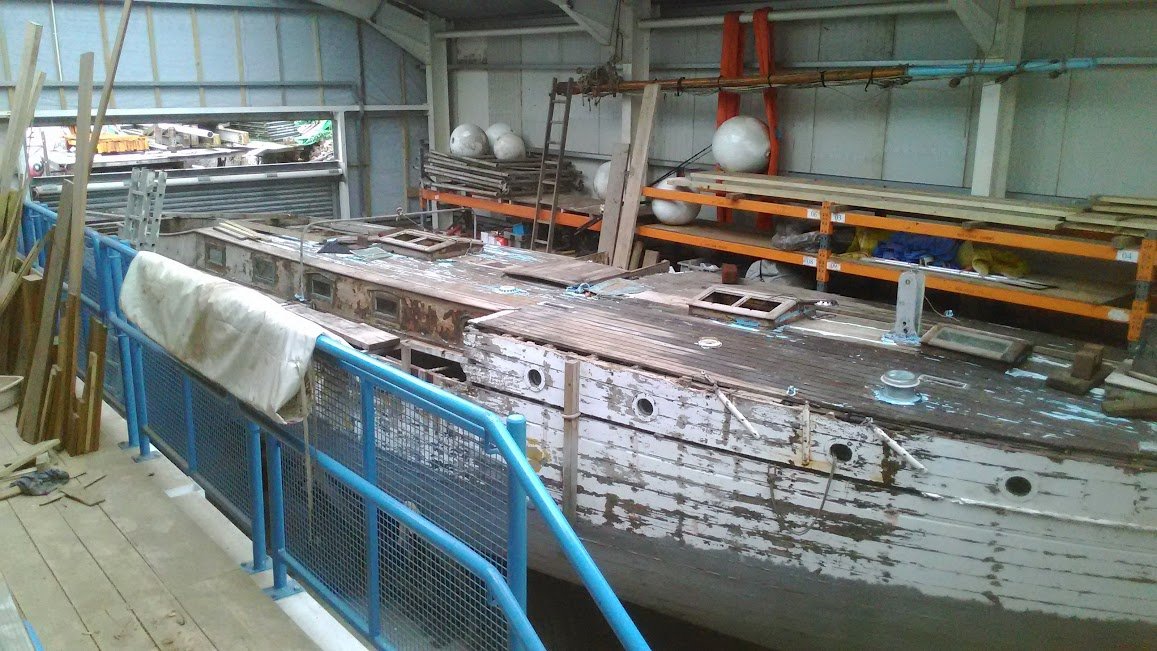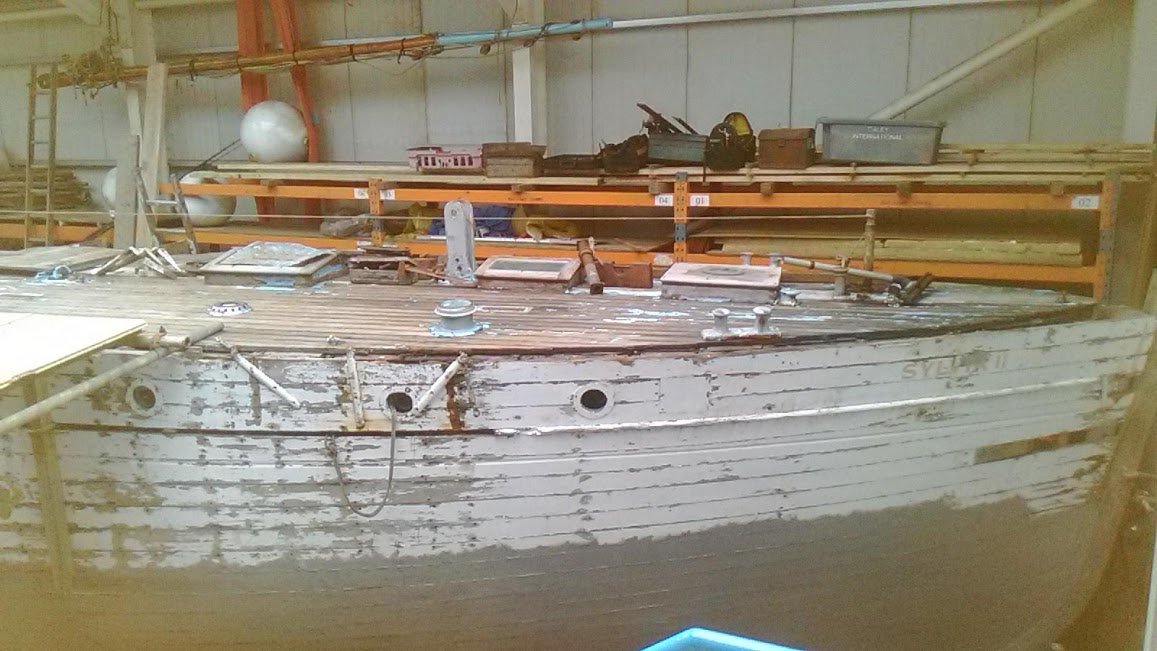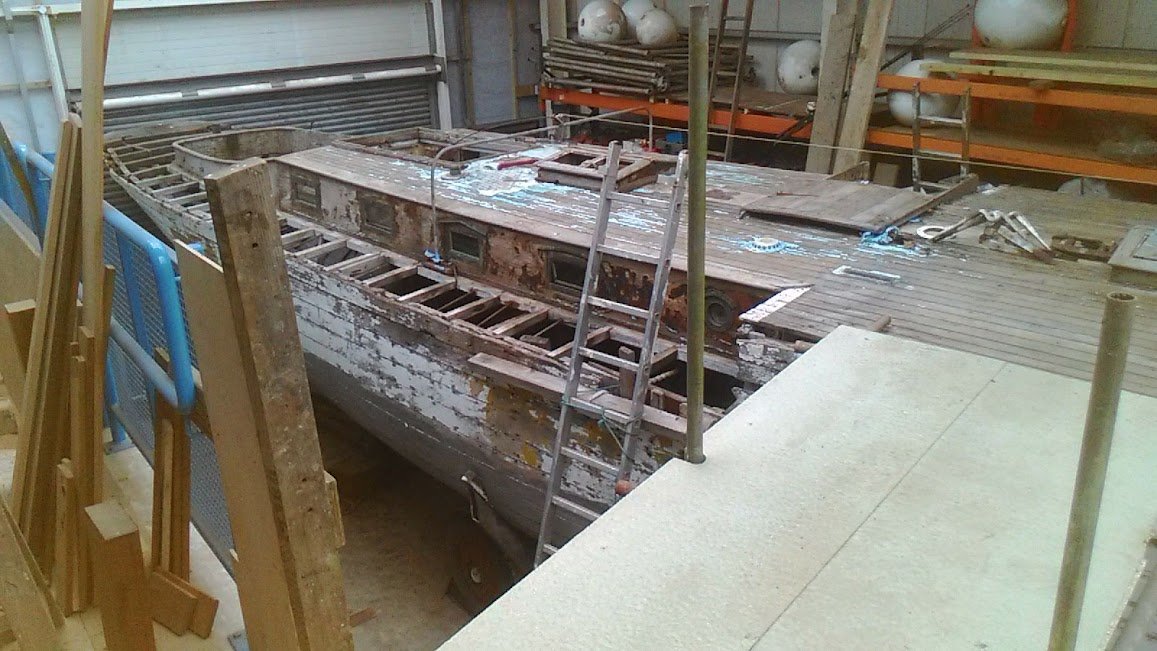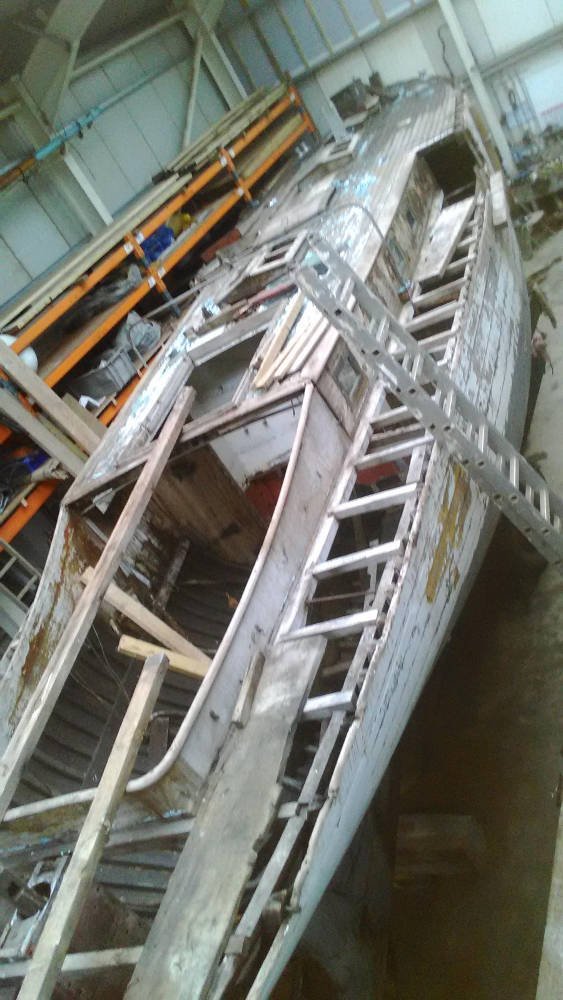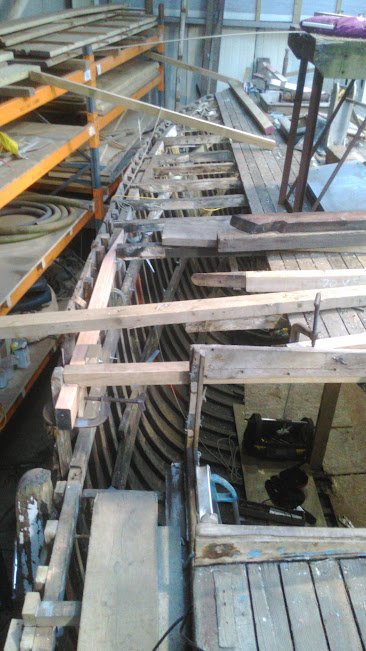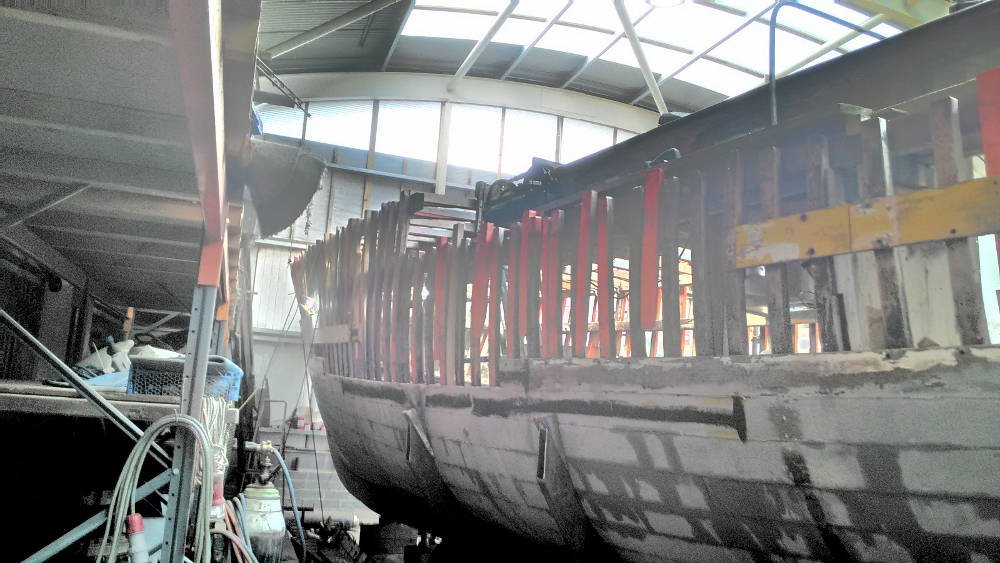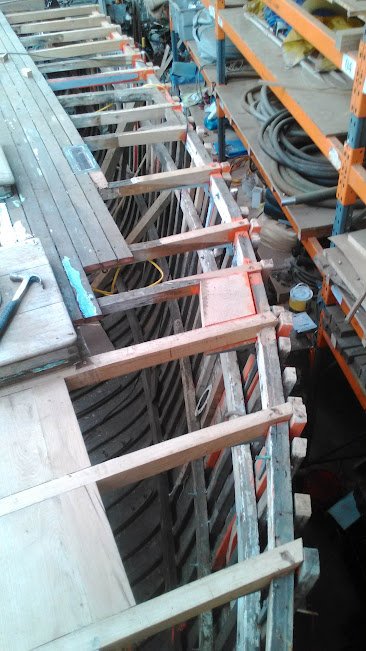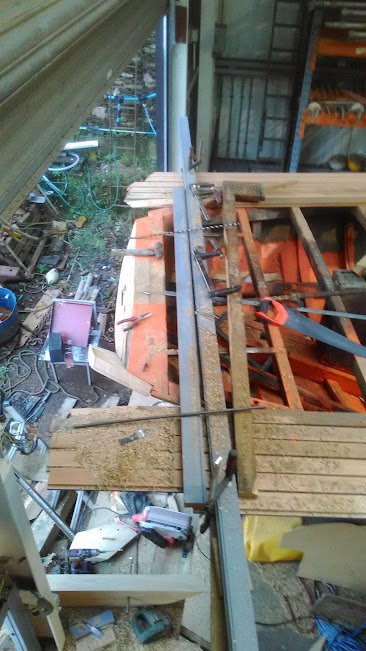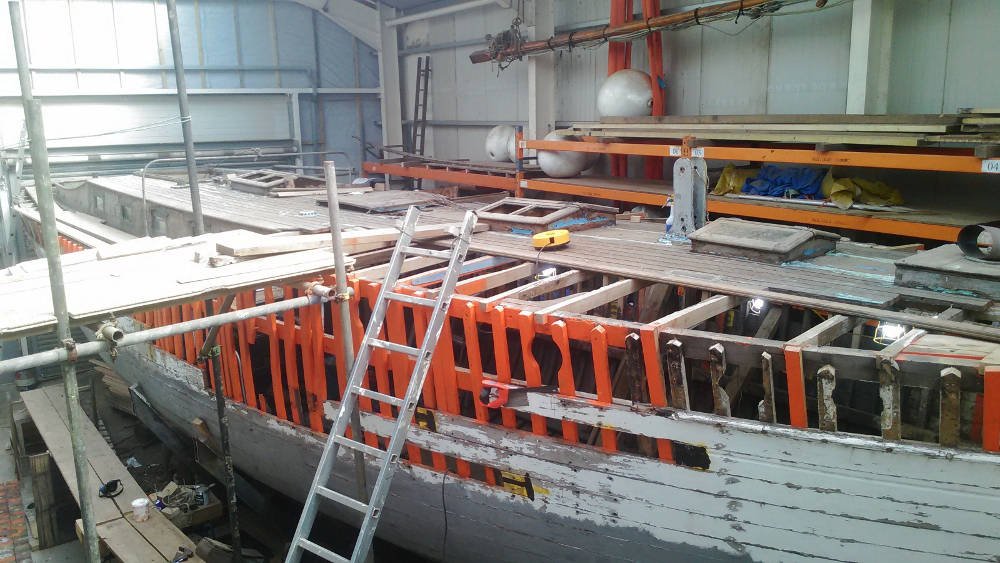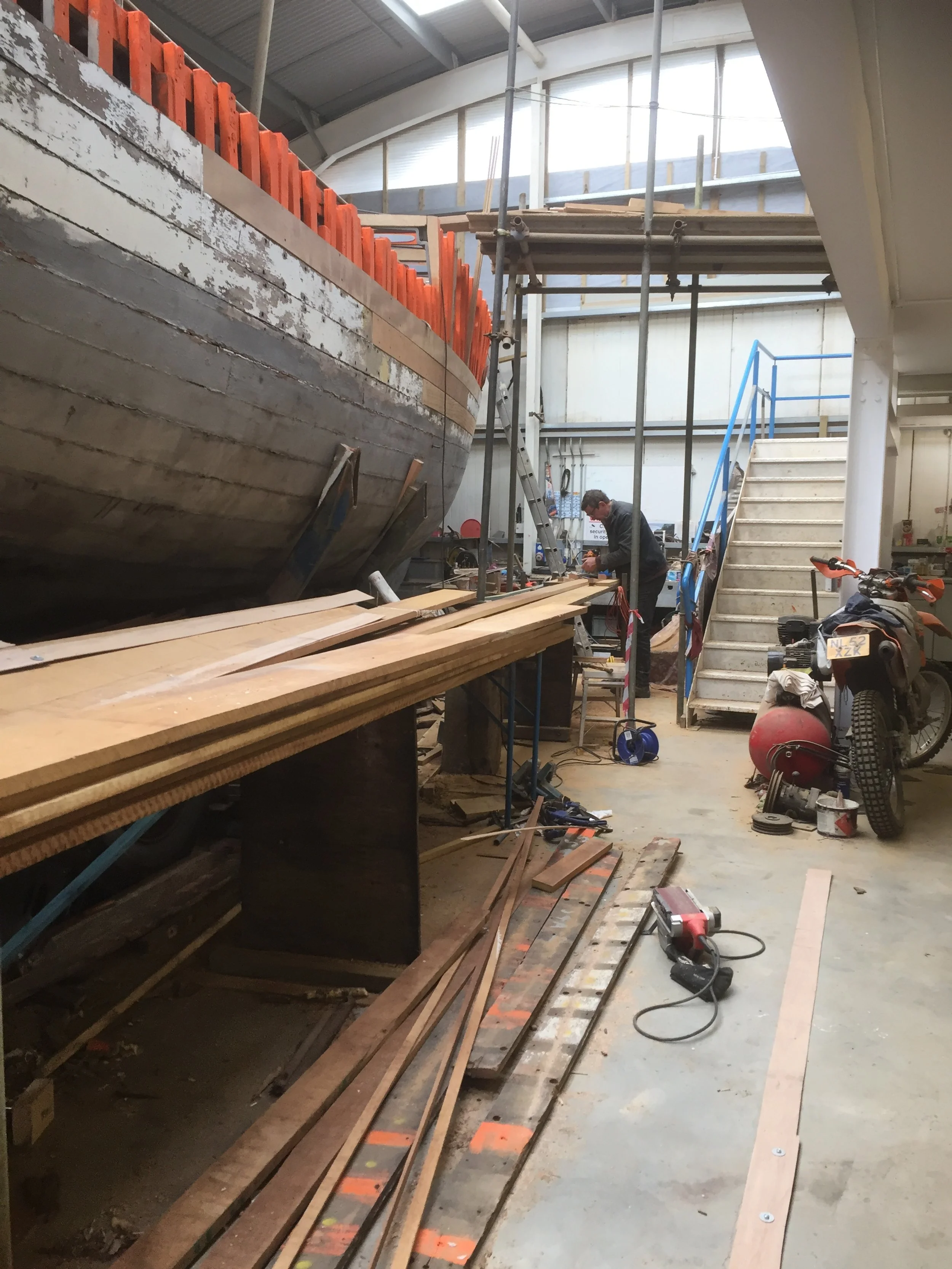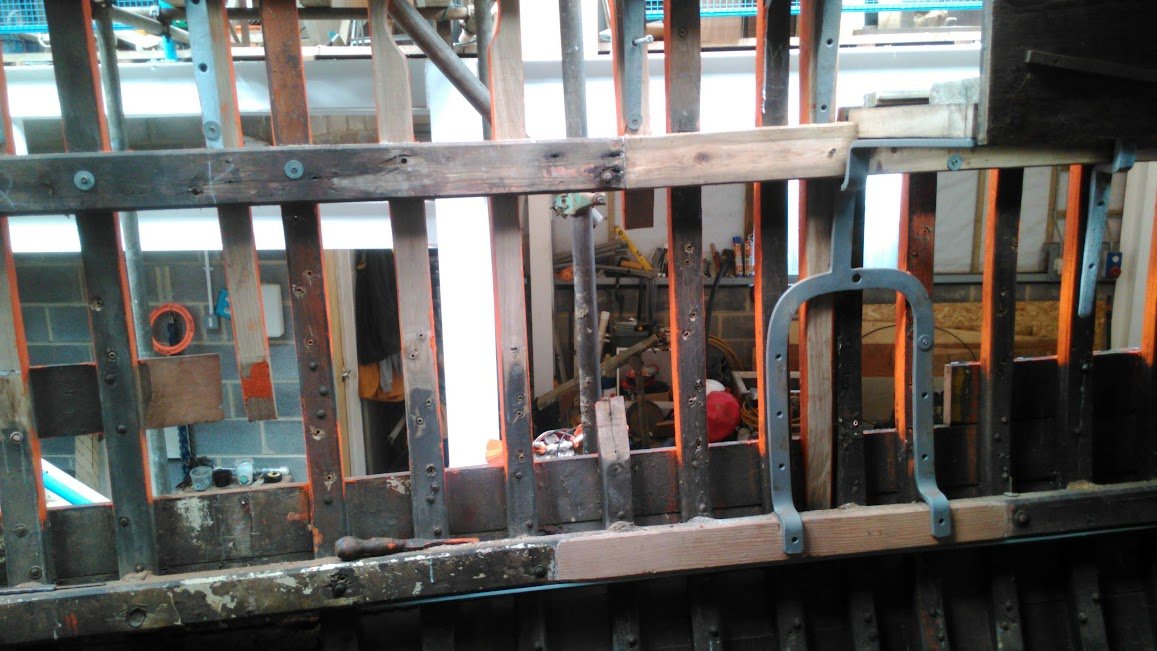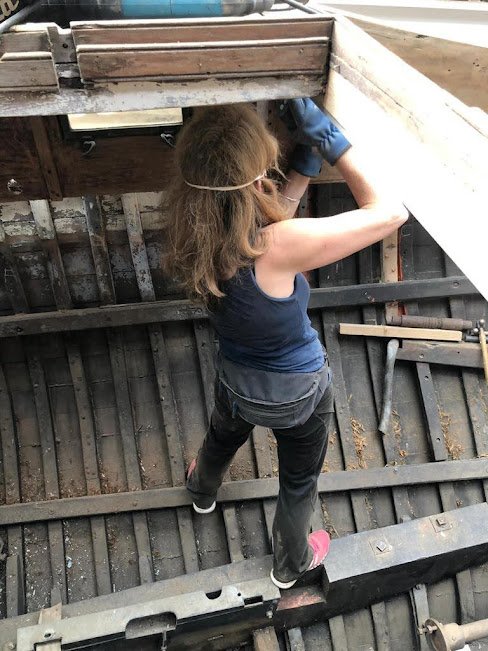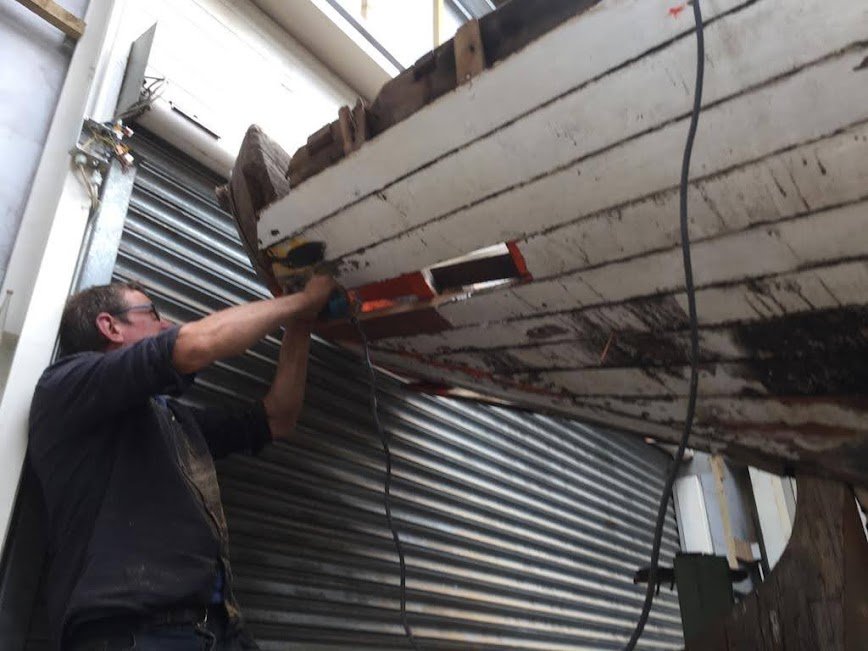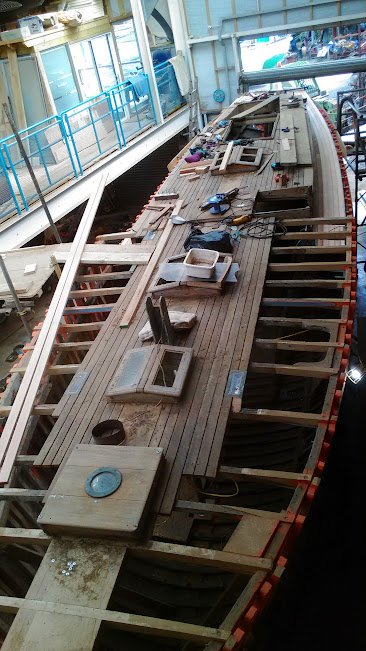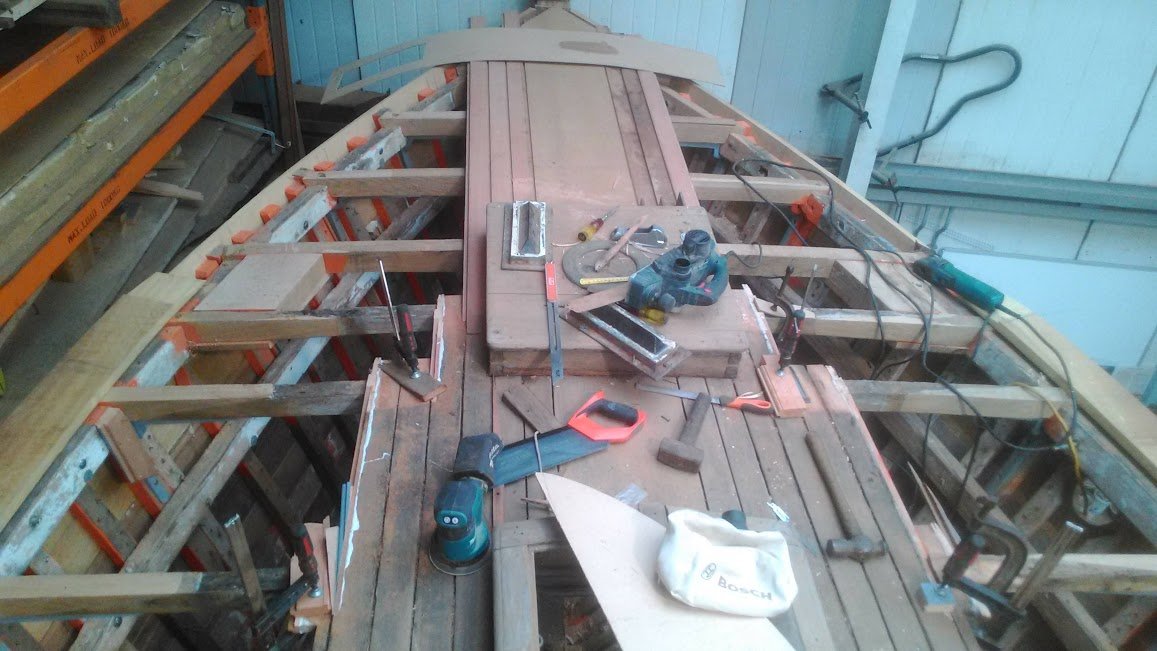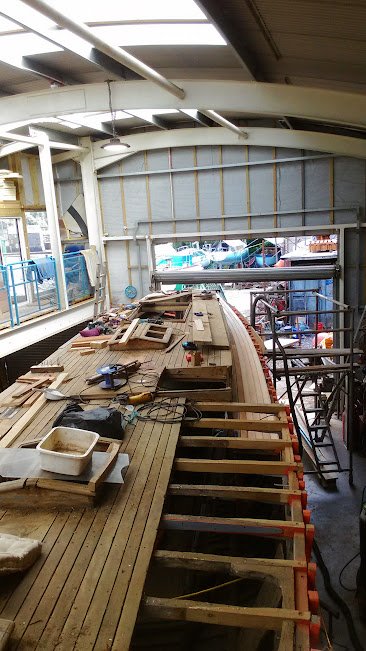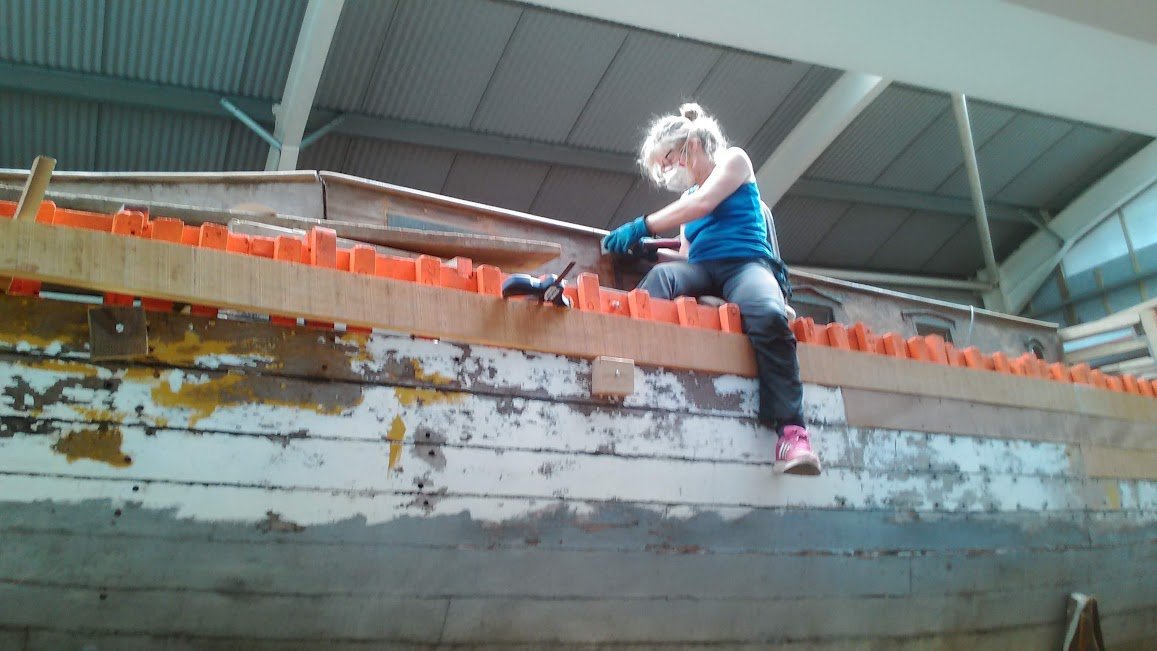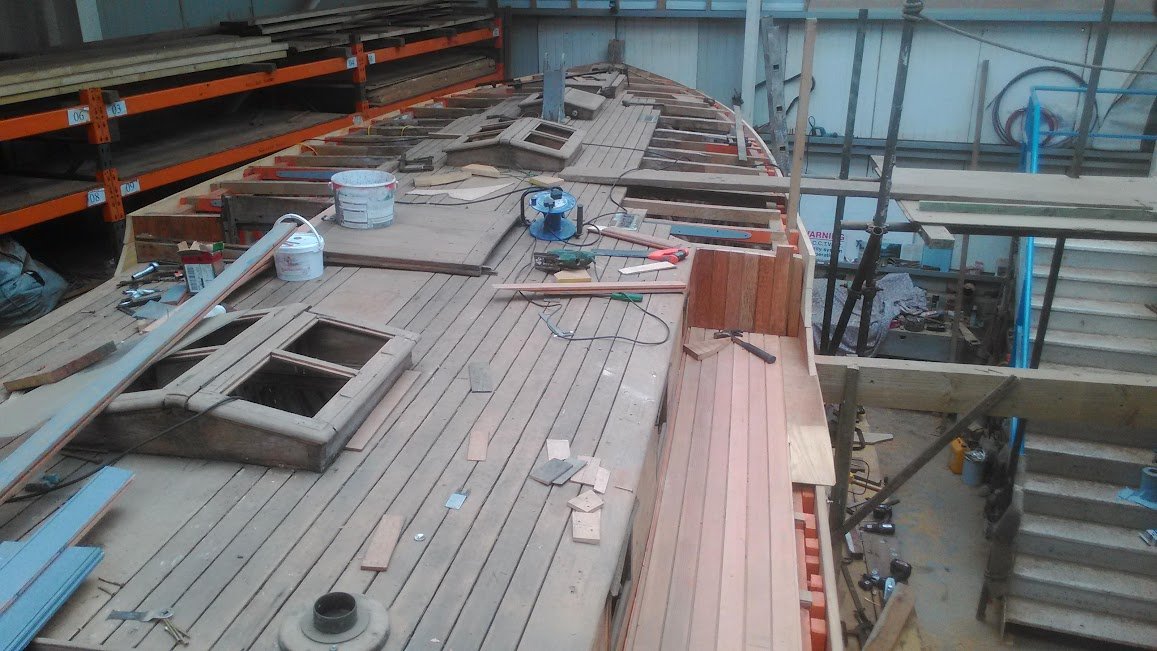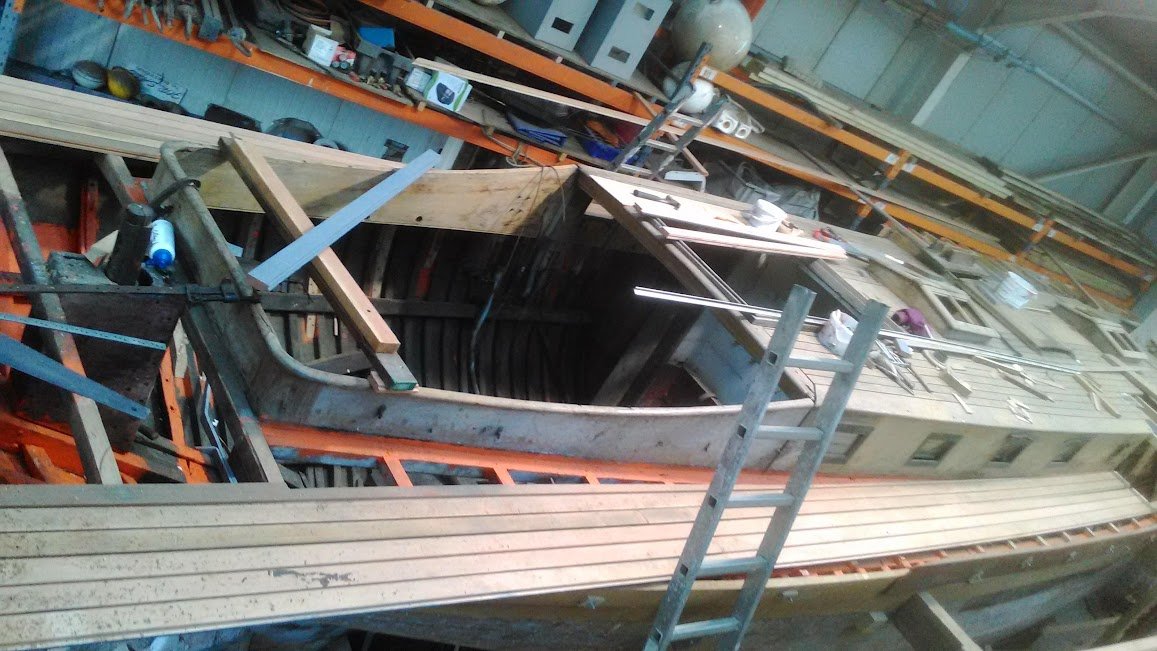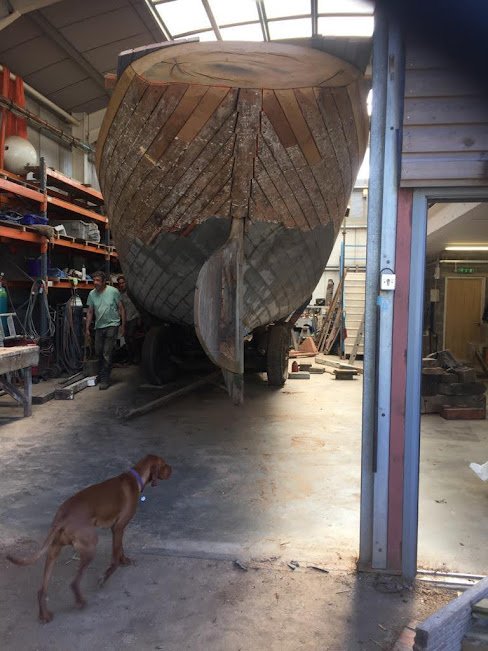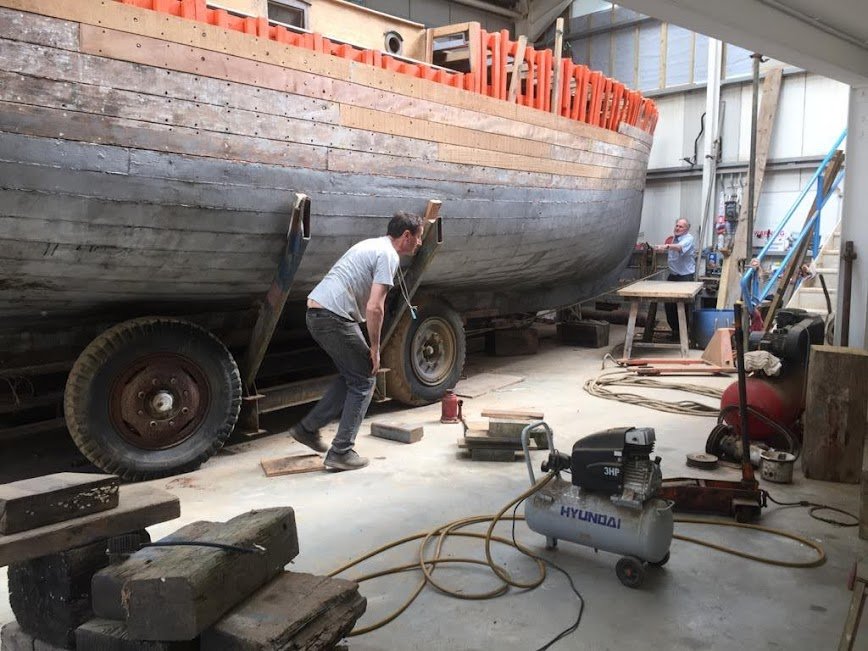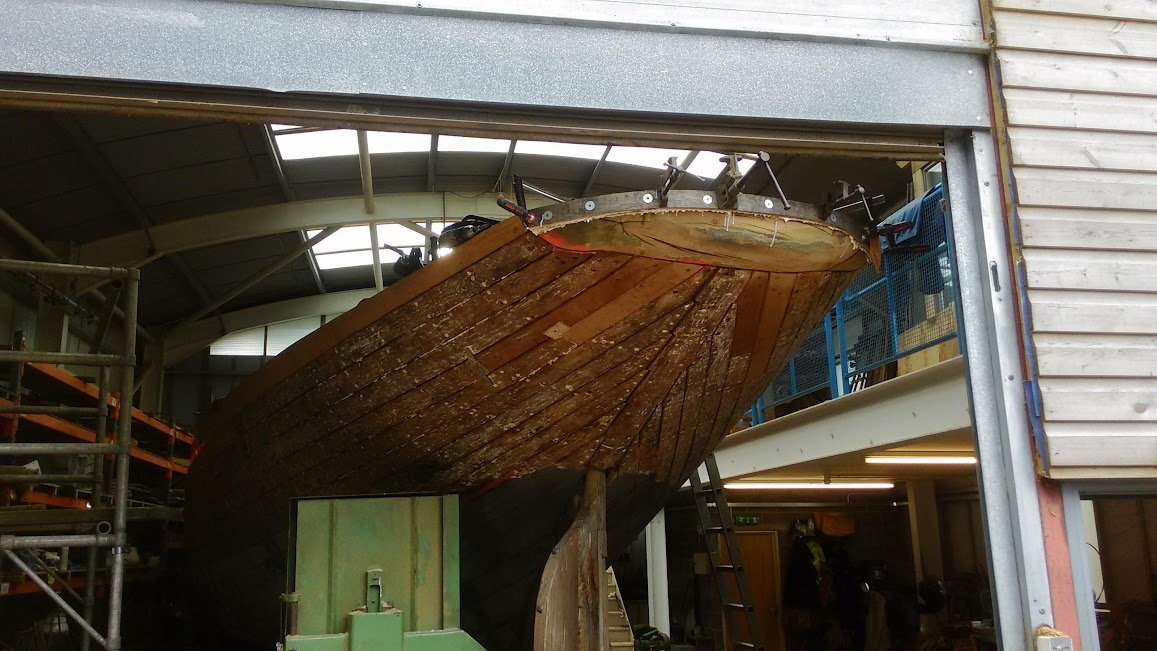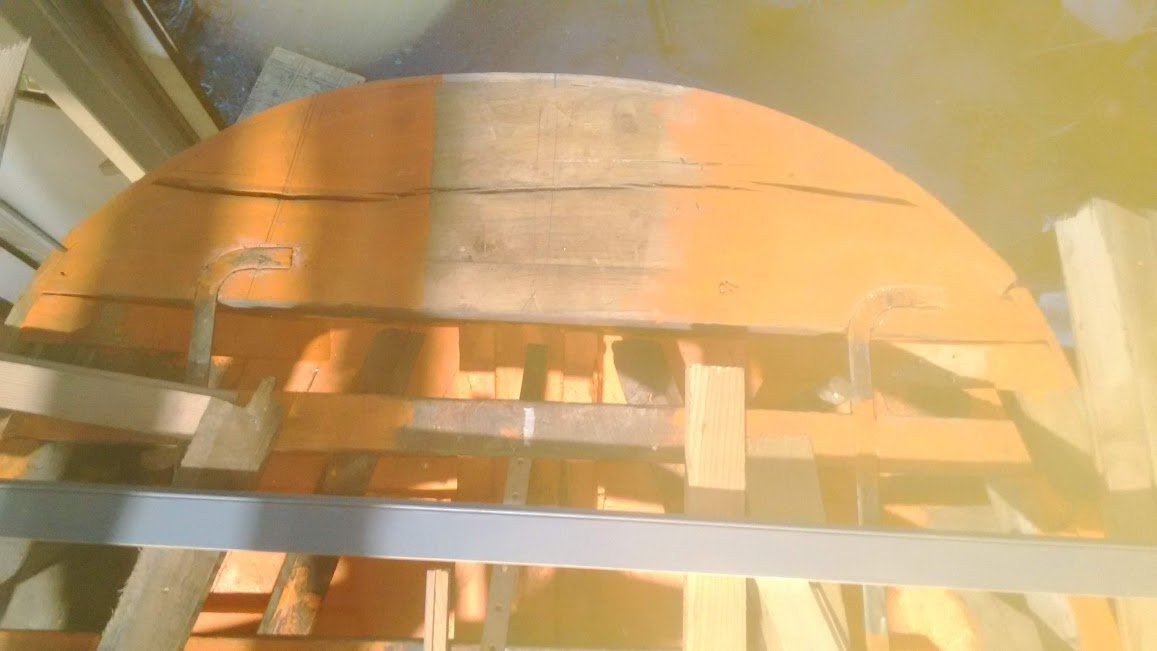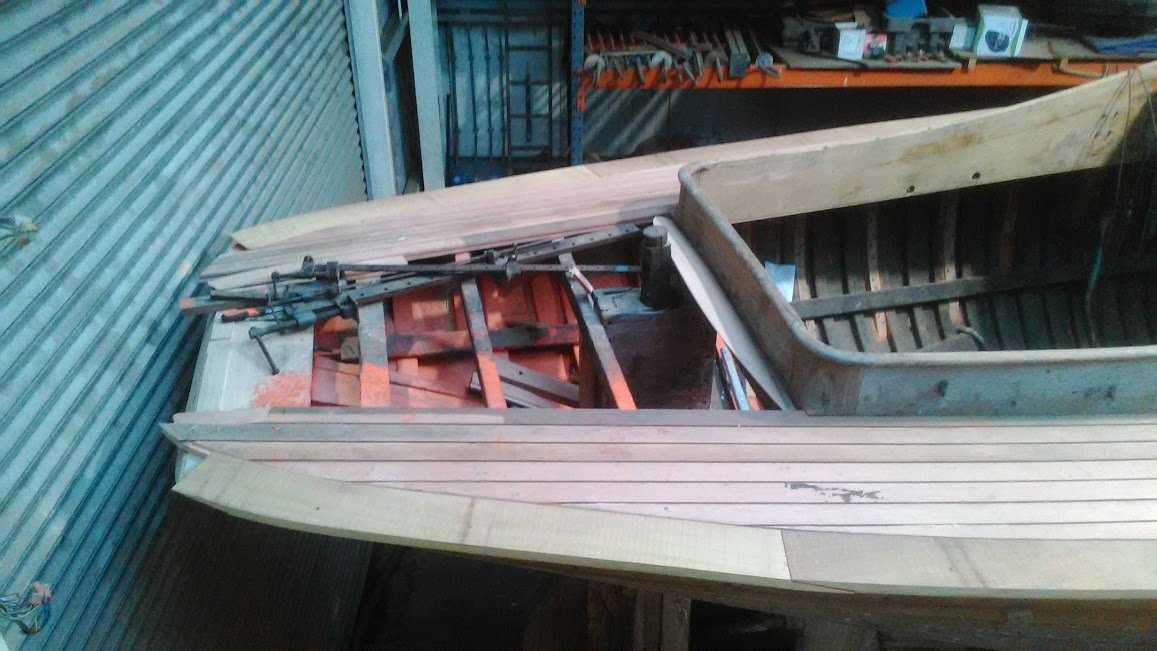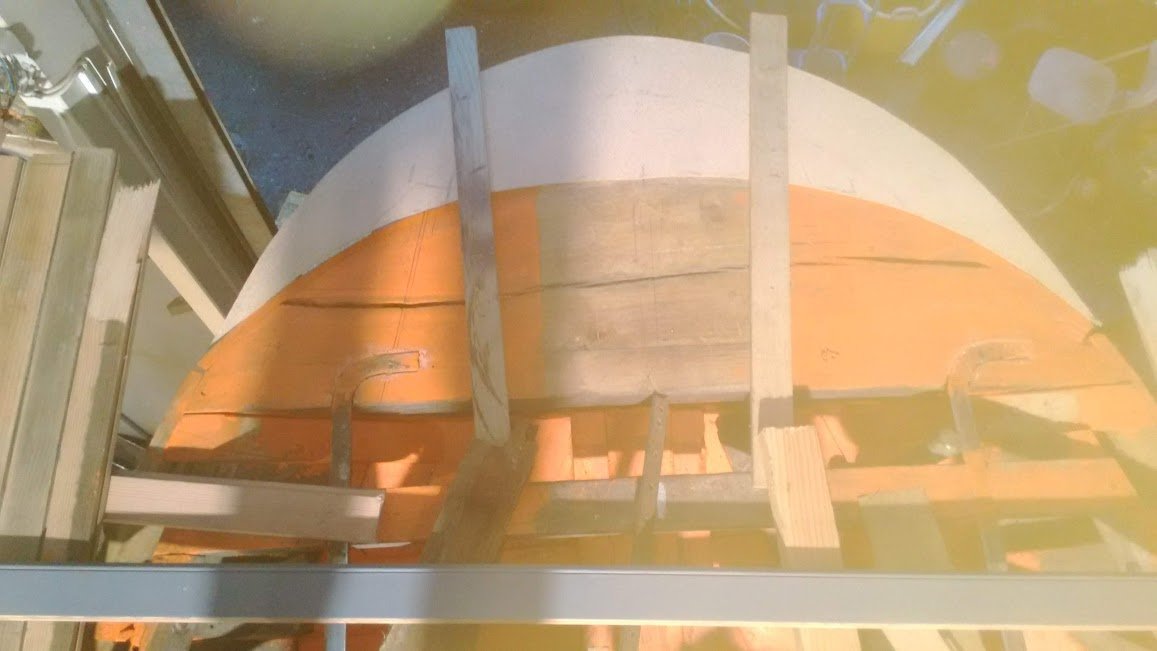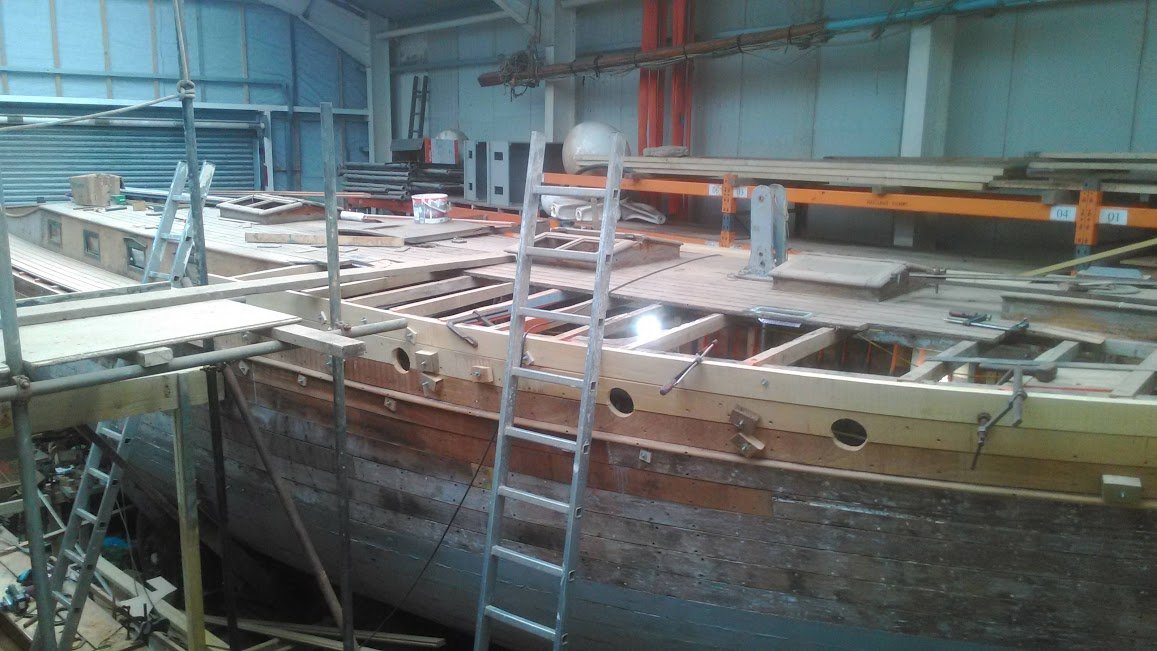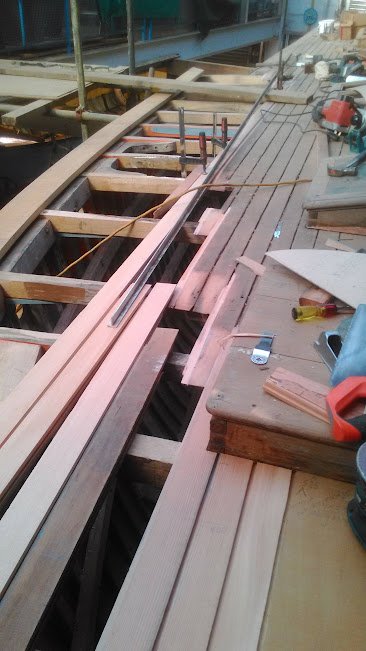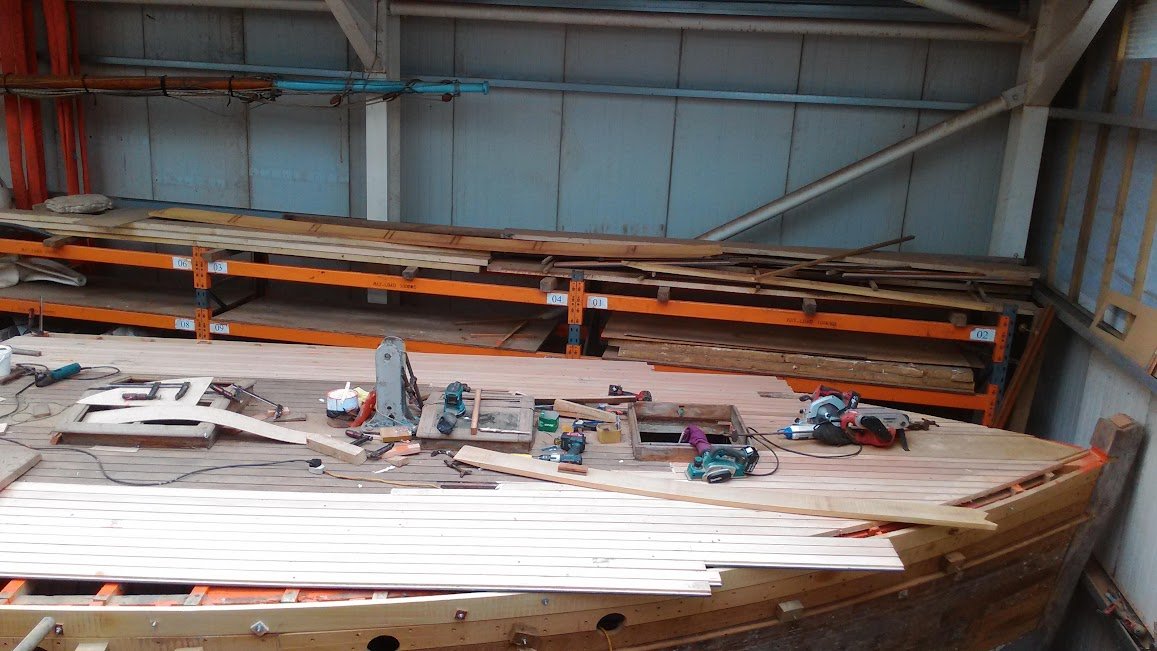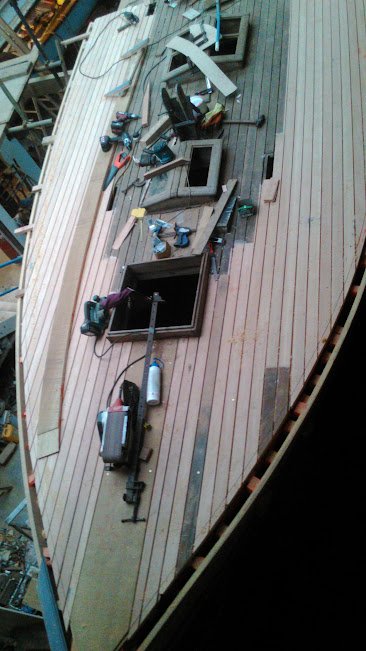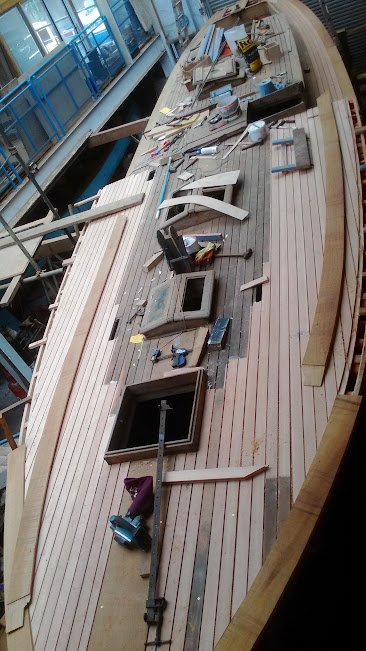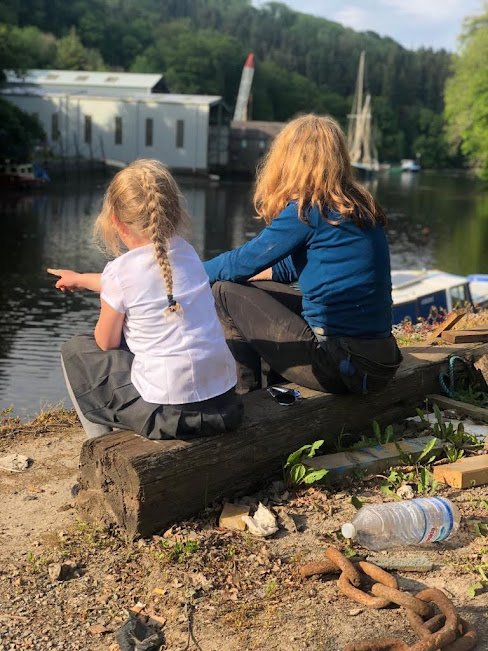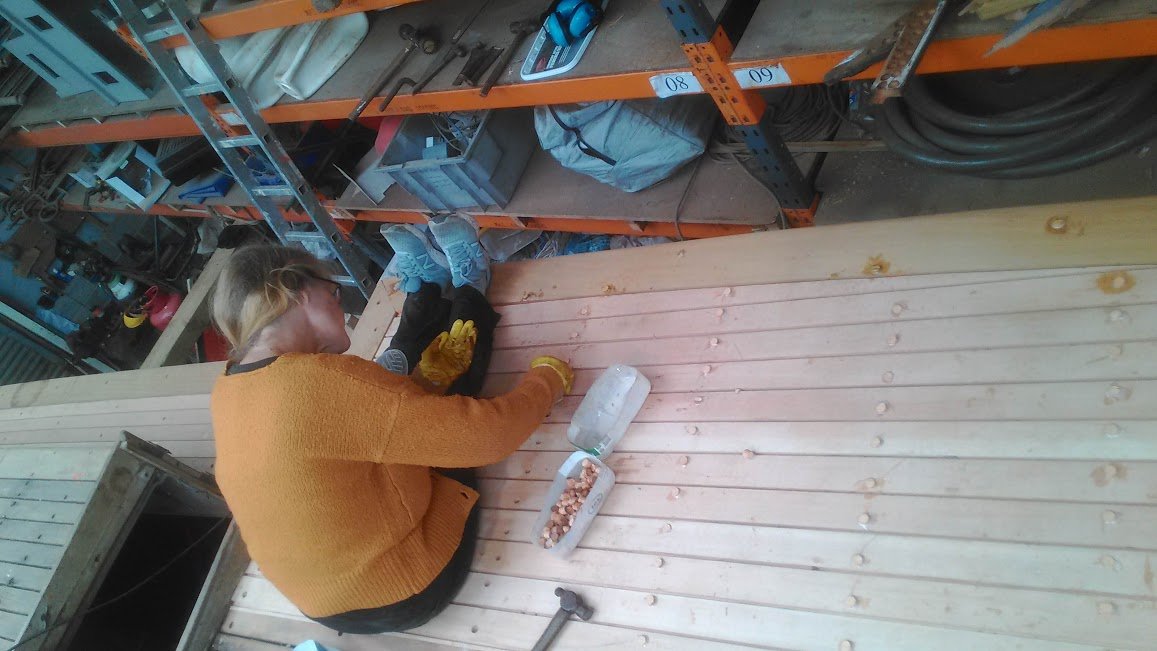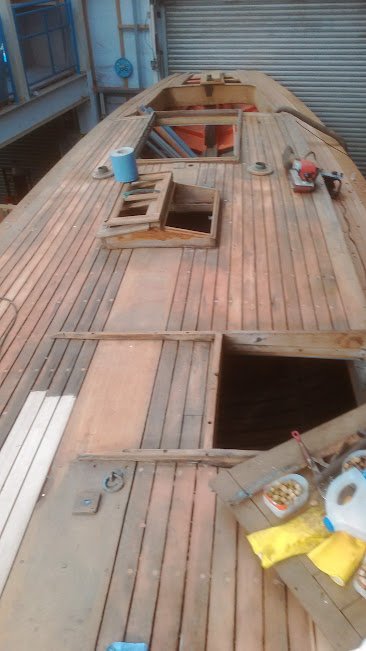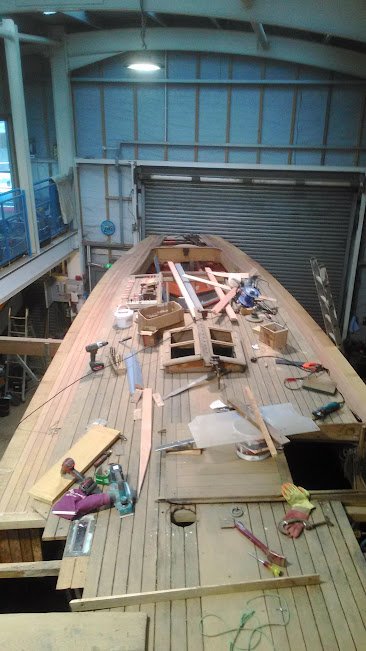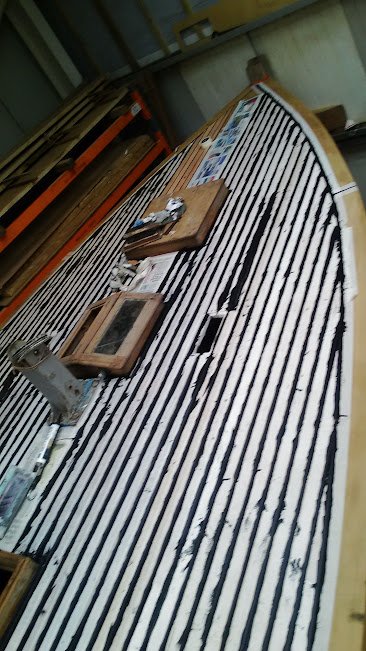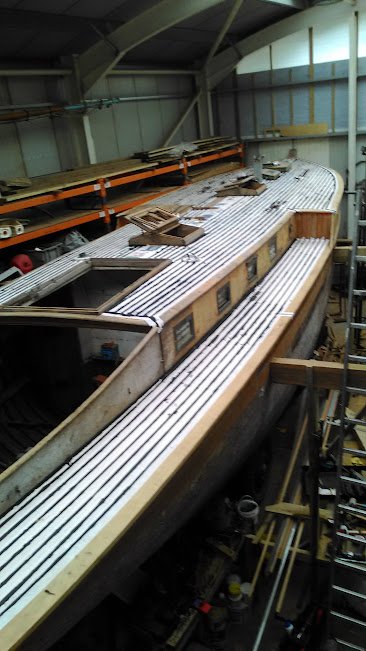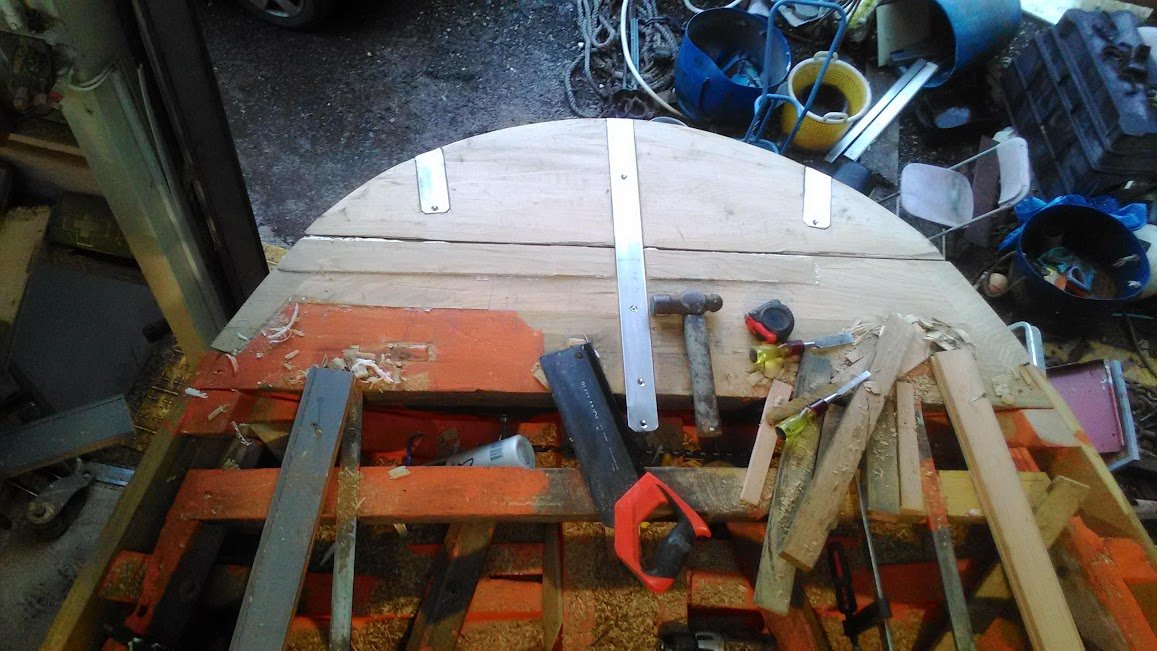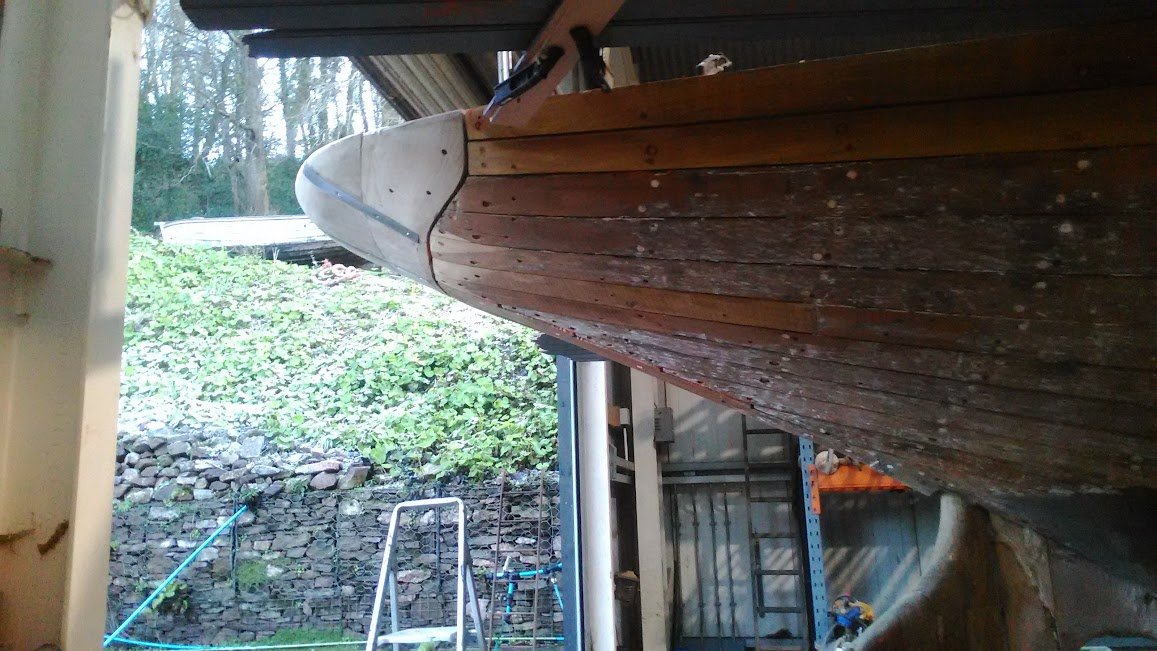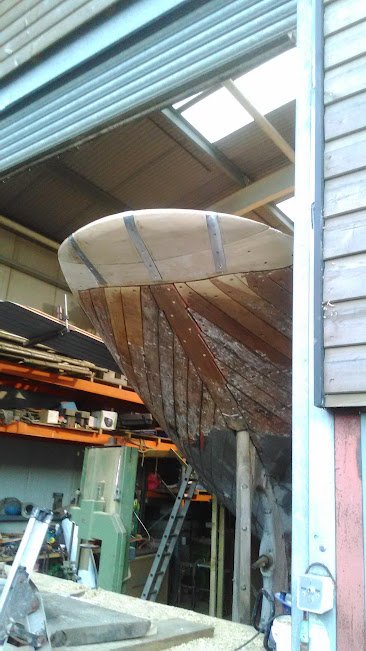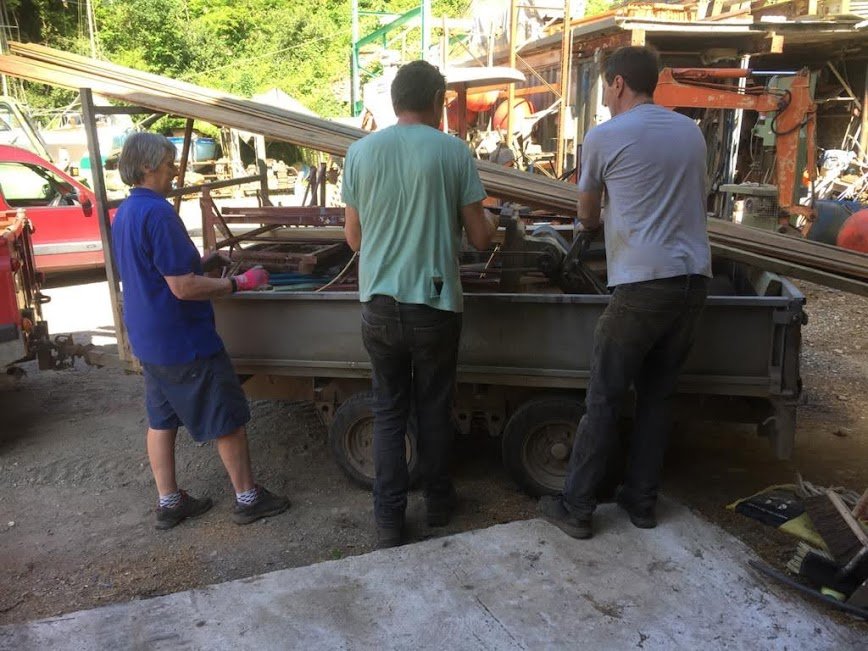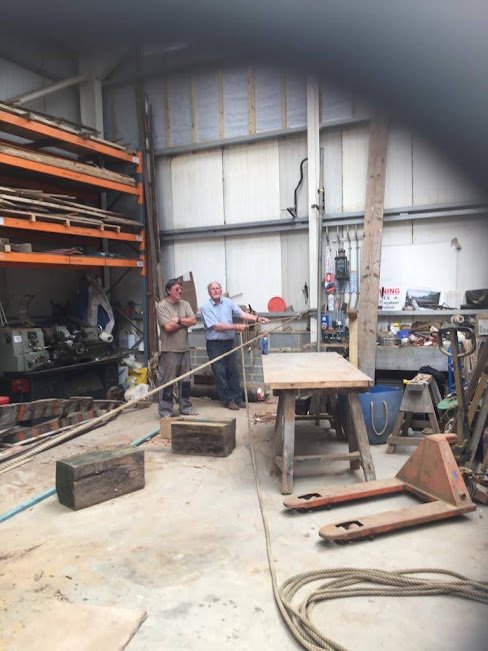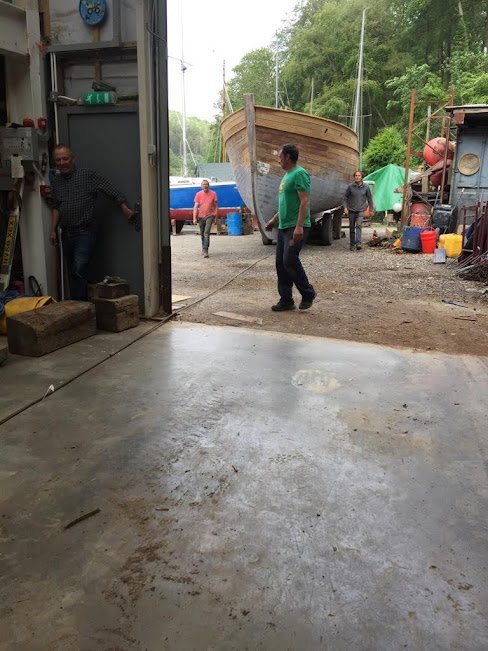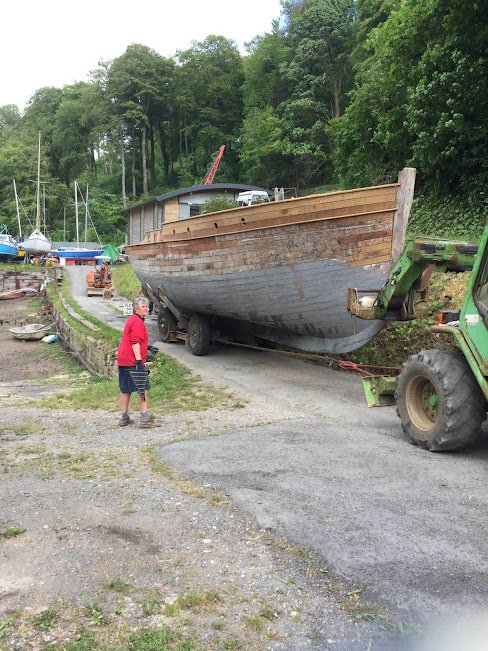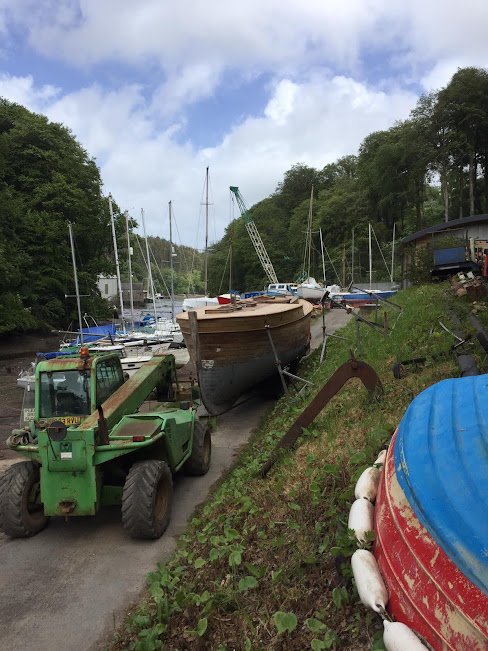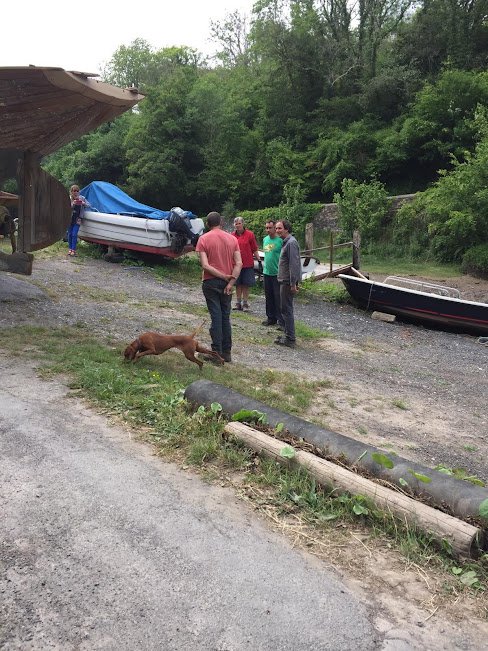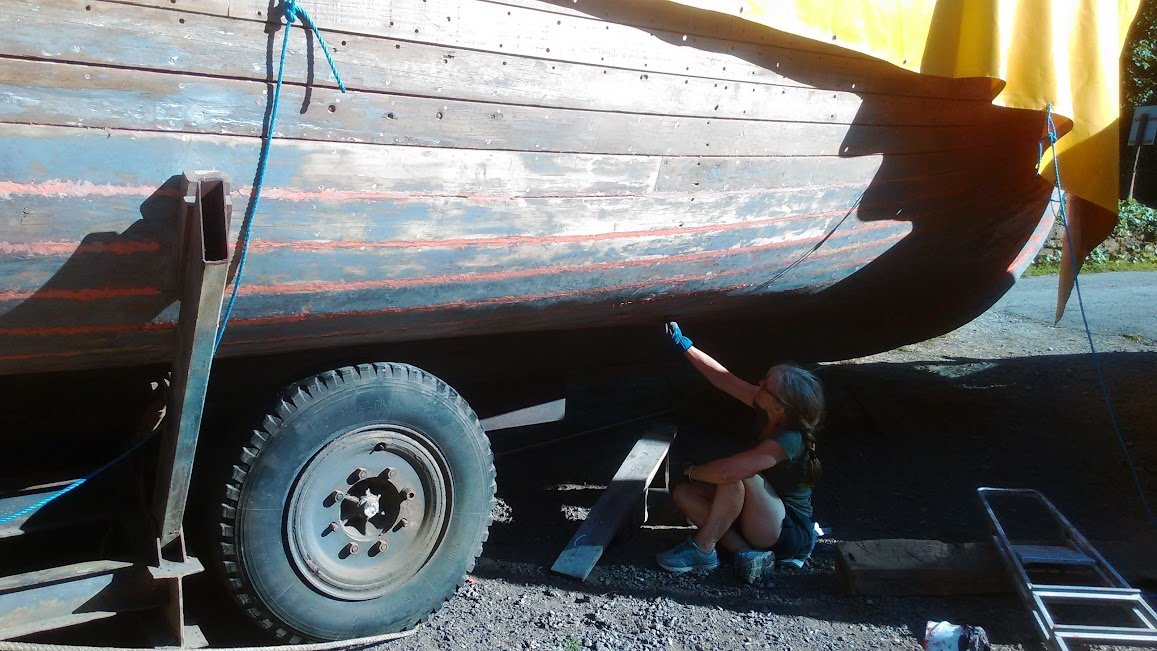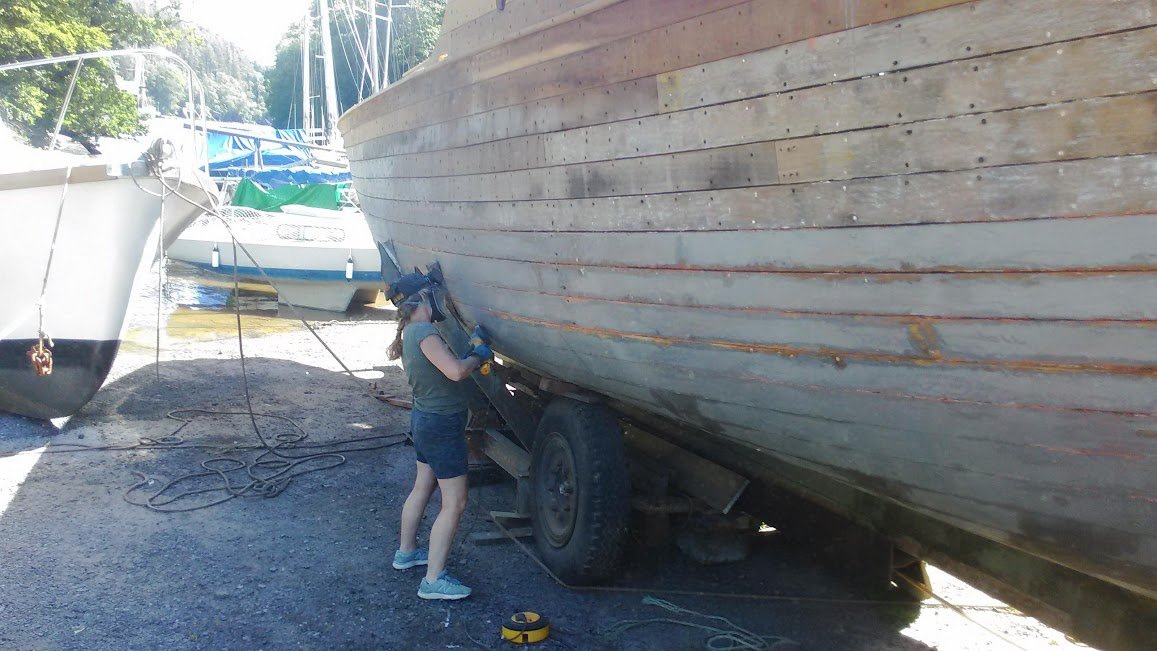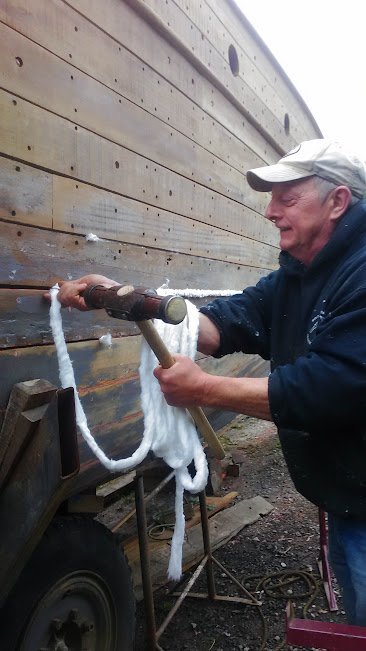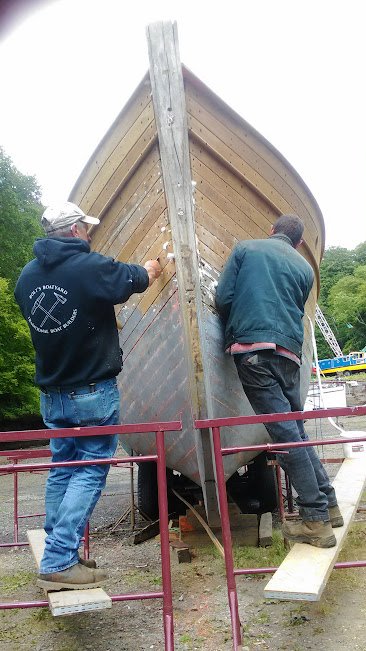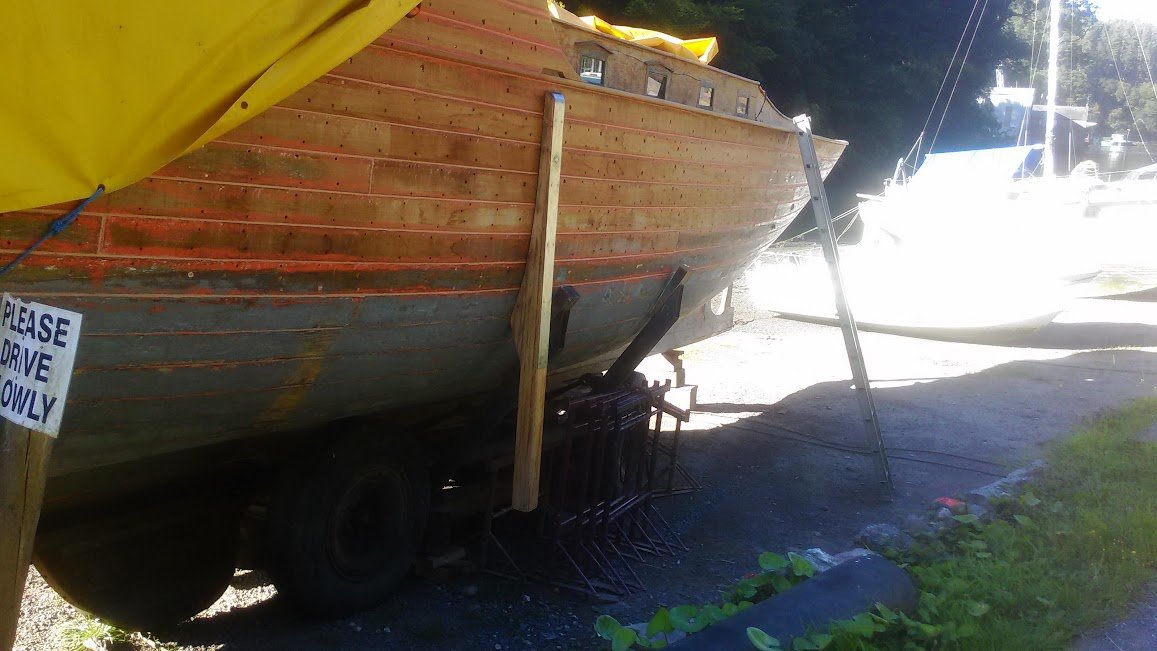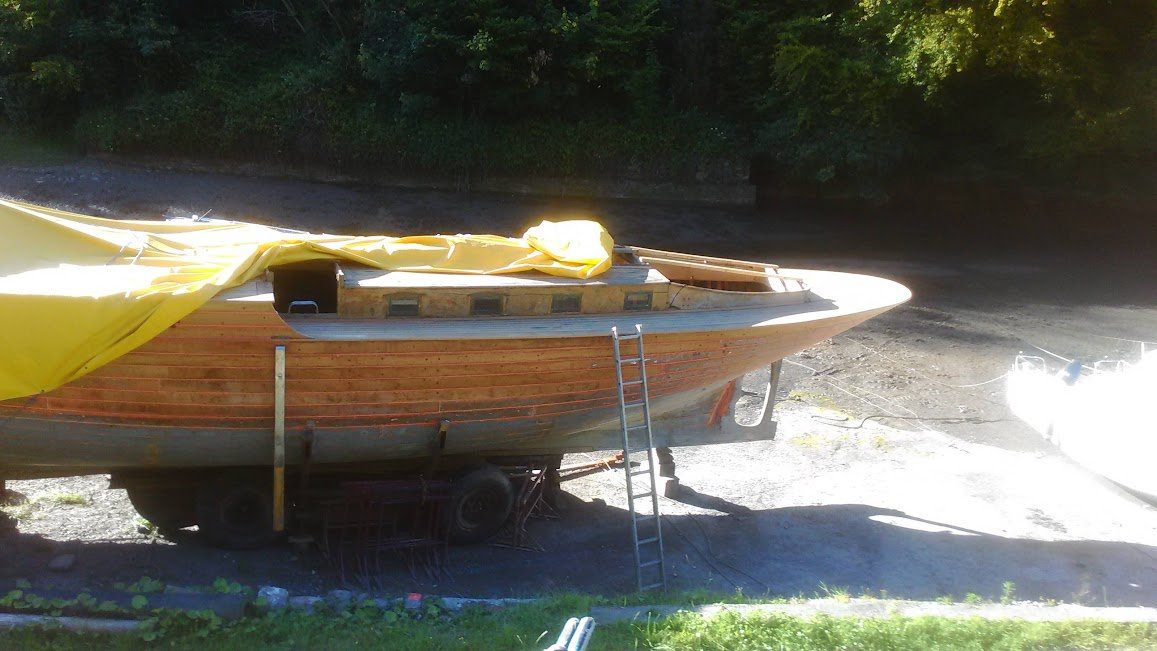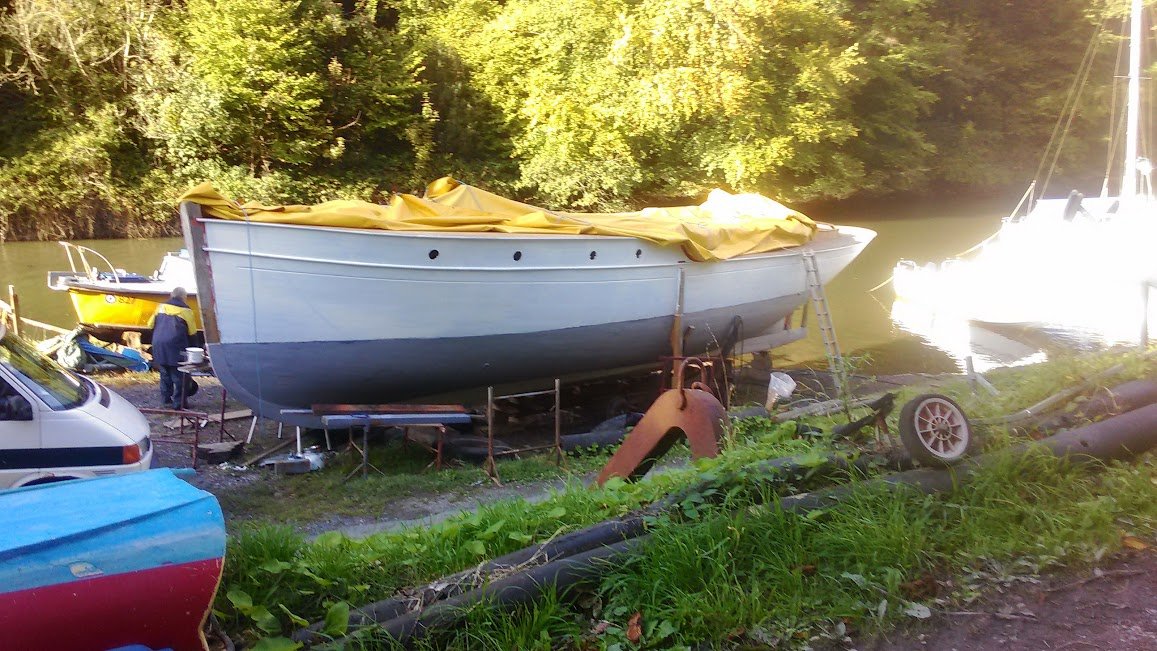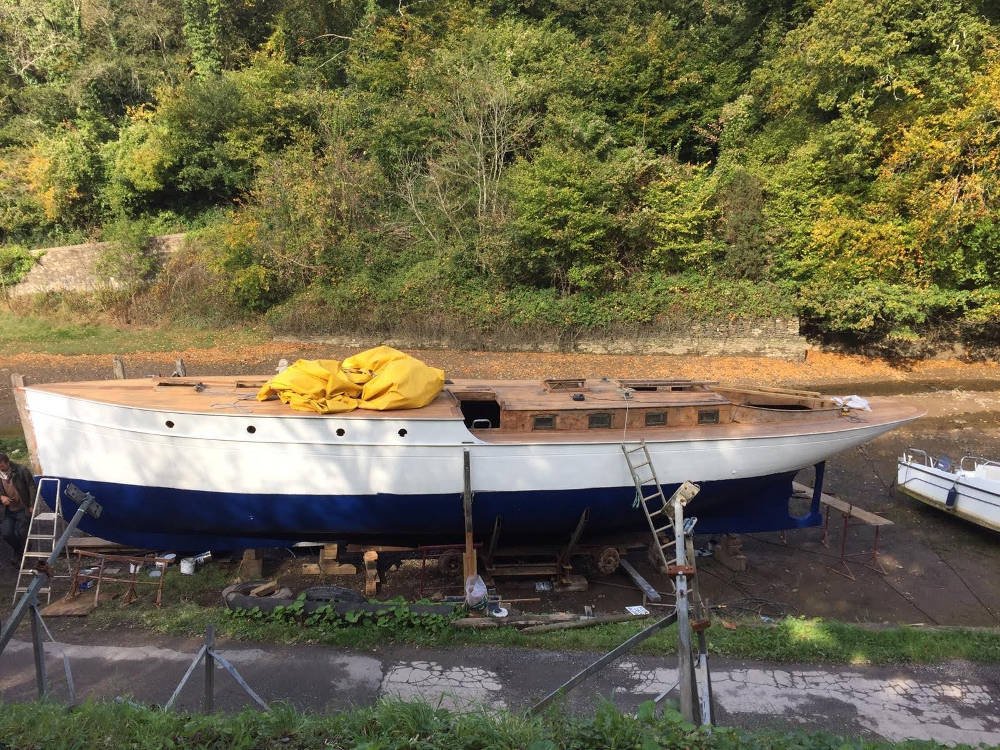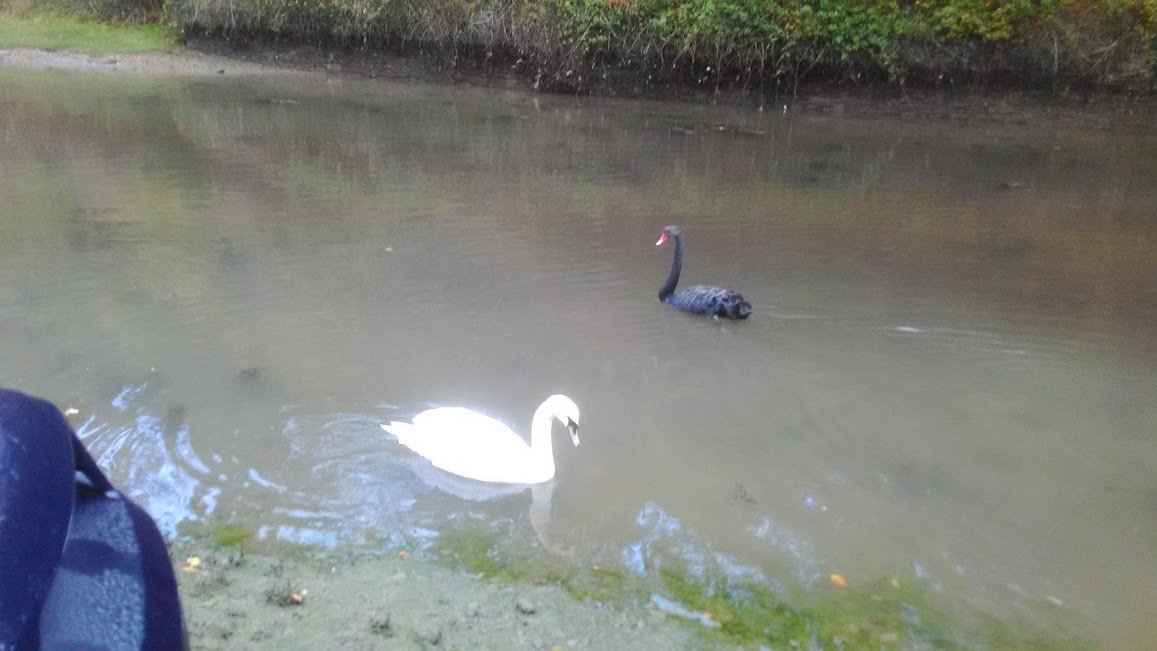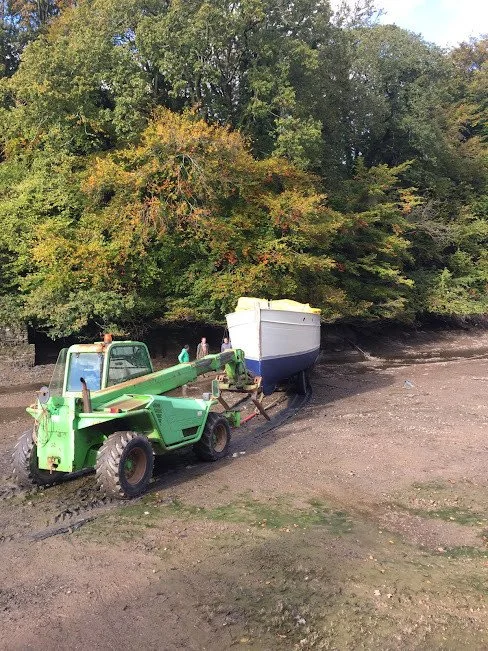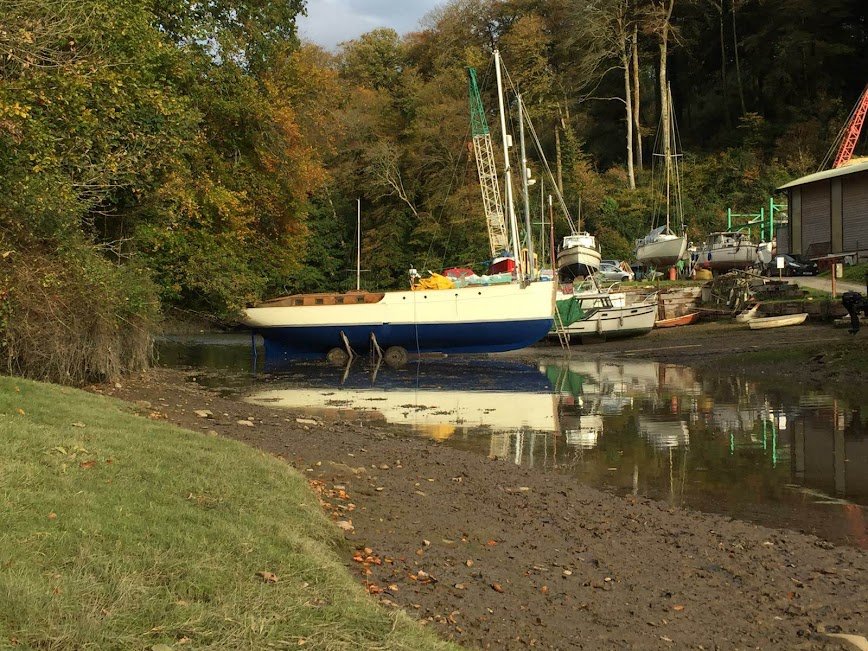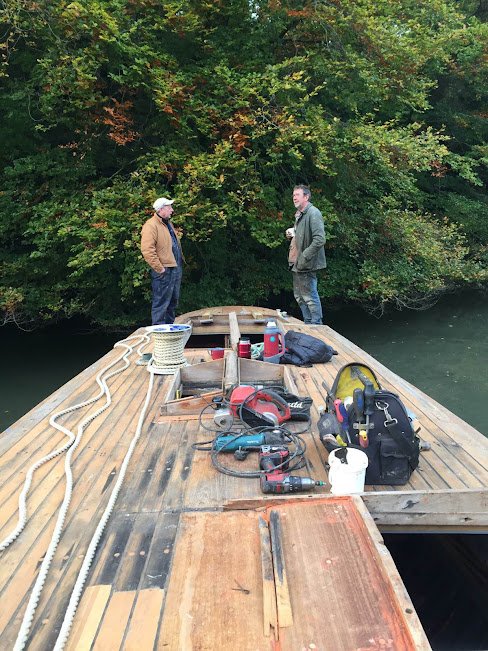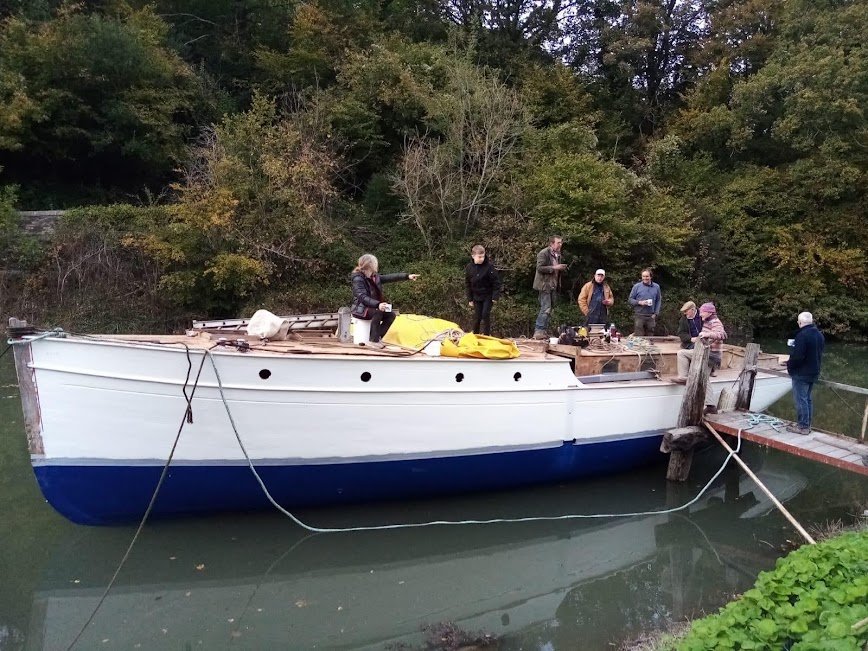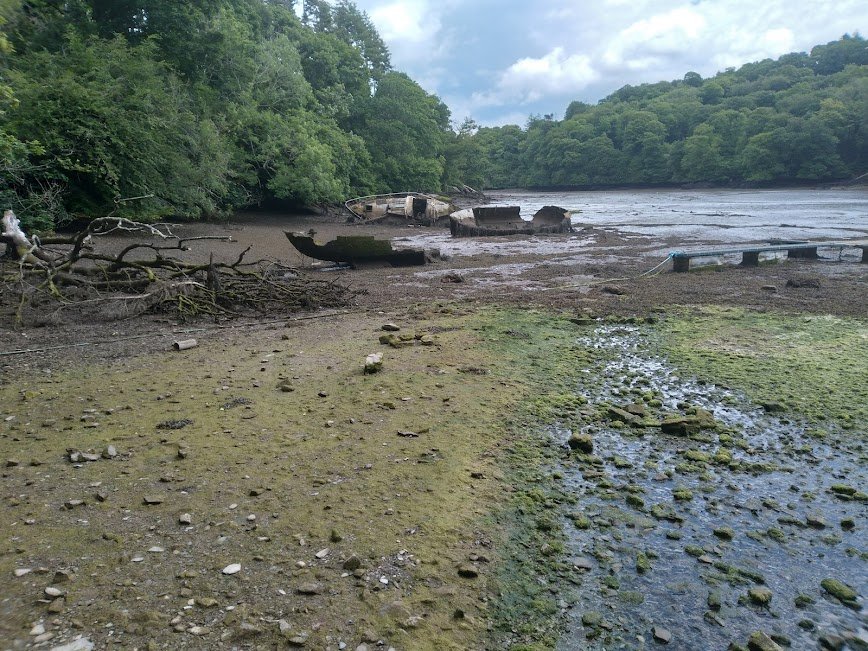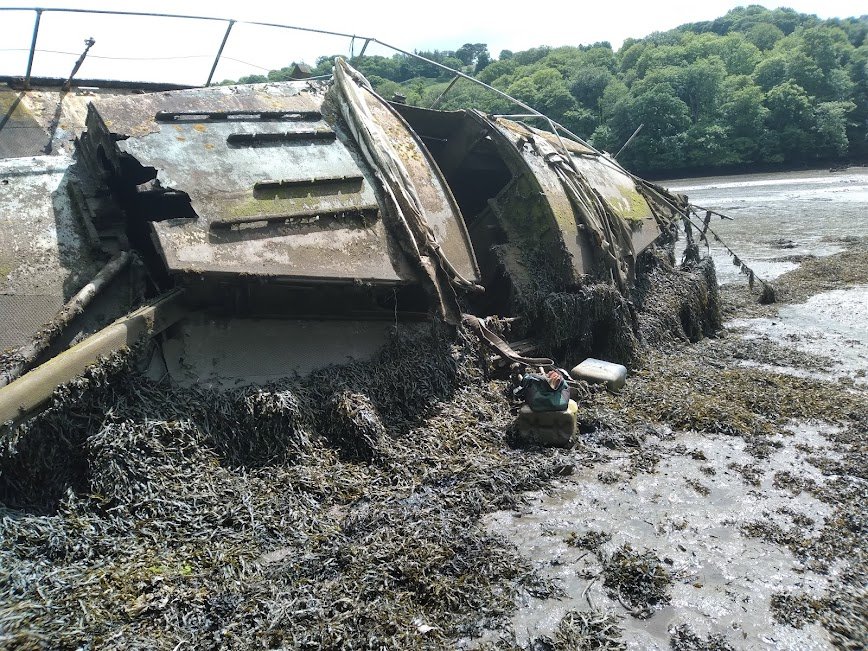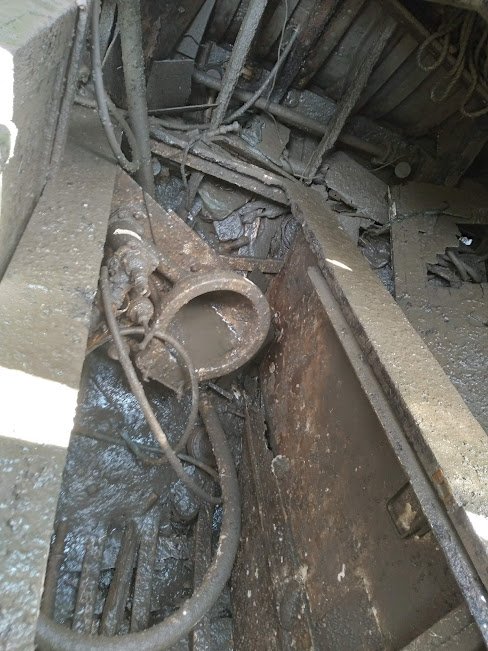Sylvia 2
In the ‘About and Overview’ section of this website I have recounted the moment at which I first became interested in ironwork, and how, at the same moment, I became entranced by the idea of building myself a boat in order to better pursue the life of roving discovery that I was at that time enjoying.
The pursuit of the interest in ironwork led on to the life at the anvil that this website attempts to present.
The fascination for the world of boats also persisted and led, in the spring of 1986, to the purchase of an old yacht, Sylvia 2.
The tale of my (ongoing) efforts to restore her is outlined below and further illustrated at the bottom of this account.
———————————————————————-
At the time of this purchase we were living on a converted hydrofoil in a small tidal creek behind Dartmouth. Among the assorted mavericks, misfits, buccaneers and miscreants that the early 1980’s had deposited there …
Creek life…
….there was a phlegmatic gentleman, Ian by name, with whom we became friendly and who introduced me into the small marine engineering firm for whom I was to work, on and off, for much of the time that we lived on the boat.
One Monday morning he came into work clearly buzzing with excitement. It emerged quite quickly, as he was unable to keep it to himself, that he had received a letter offering him a fabulous yacht at a very low price… a yacht that he knew from childhood visits to it in the company of his father, who had been a family friend of the owner.. a yacht, Sylvia, that he remembered as palatial and beautiful…an offer in short that was a once in a lifetime opportunity etc. etc.
It was a very different and disappointed Ian who returned from Weymouth at the start of the next week. His childhood memories had been inaccurate.. she was not a palace at all, being slightly less than 50 foot in length, and her erstwhile beauty was well hidden by many coats of peeling paint and the abandoned clutter of an 80 year old liveaboard who probably should have been persuaded to move off a number of years ago. Not only that - the rats had moved in, the bilges were a foot deep in a brown soup and the deck was leaking like a sieve. In short he considered her to be only a few steps removed from being a complete wreck.
Unimpressed by our efforts to convince him that all these things did not really amount to insuperable obstacles and that he would be far better off in her than in the 26 foot sardine can into which he was currently squeezing his 6 foot 4 inch by 250 lb person every night, he wrote and informed them that, sadly, it was not for him.
And so it came about that, having failed to change Ian’s mind on the subject, we eventually got in touch with ‘Pop’ Williams ourselves and arranged to come over and have a look at the boat.
She turned out to be an example of the Edwardian gentleman’s auxiliary or motor sailing yacht, and appeared to us to be, unlike slightly later vessels of the same class, to be rather more yacht than motor vessel. Built to a design of the firm of Cox and King of Pall Mall and Wivenhoe she seemed quite likely to confirm that company’s acknowledged attention to elegant lines and practical seaworthiness.
With the exception of her raised foredeck she appeared to be a very close relation to the slightly earlier Cox and King vessel Braemar (Braymar) – sadly no longer with us - of much the same size and format.
As described on the National Register of Historic Vessels, “Braymar … also distinguished herself by winning the London to Cowes race no less than five times in six starts ….. Her size, speed and sea-worthiness made it easy for her to cross the Channel laden with troops...” while in the Cox and King catalogue of 1913 she, Braemar, is cited as having “carried all before her in the cruiser events” of 1912 and is held up as an outstanding example of their designs in this class of vessel.
A descendant of the firm has compiled, and put on the internet a catalogue of the not inconsiderable output of Cox and King at the start of the 20th century (at www.francoisgrosjean.ch)
Sylvia’s details,
Motor sailer
LOA. 49 ft
Beam. 10 ft 6 inches
Draught. 3 ft
Displacement 19 tons
Rig. Yawl
Sail area. 660 sq ft
Designer Cox and King
Builder. Beazley & Kemp
Year built. 1915
Hull. Pitch pine below waterline, teak above
Deck. Columbian pine
Ballast. Lead ballast keel
Engine. Morris, Henty & Gardner Patricroft 40 HP until 1958, thereafter Parsons Pike conversion on 4D (as in Fordson Major)
She had had 3 owners.
William John Dowding had been the first registered owner, and we believe that it was he that commissioned her in the first place. Her name at this time seems.to have been "Sakhara”.
She then passed into the ownership of Edward Claude Maby ( 1893 - 1967) in October of 1924.
Anecdotally, during the war she was sunk on a high mud berth in or around Poole harbour, in order to deny her use to enemy forces in the event of an invasion on the south coast. There is a faint ‘tideline’ on the under seat locker fronts to this day that is purported to be the result of this period of semi submarine existence.
He had owned her until 1957 when she was sold.to the Williams family of.Weymouth. "Pop" Williams used and.lived on her, a well known figure on the waterfront at Weymouth over the next 30 years, until his daughter Margaret persuaded him.to move onto land in 1986 after he had injured himself in a fall.
We heard many tales, while visiting Weymouth, relating to her speed and sea kindliness and we were informed that she was a frequent winner or leader in local regattas and races (Weymouth and area in the 1950’s through the 60’s and 70’s), although we do not know anything of the detail of these statements.
A few visits to Weymouth were enough for us. She was not a wreck, but even to my inexperienced eye, it was impossible not to notice that there was a lot to do.
In Weymouth harbour, Spring of 1986
Quite how much there was to do did not fully dawn on me until, after several false starts, we had gurgled and pumped our way across Lyme bay one bright and windy June day, and eventually drawn her up on a slip next to our houseboat just behind Dartmouth.
A number of things then became apparent, many of them serious enough to be quite prohibitive to anyone in their right mind; but this latter, it would seem, I wasn’t and, undaunted, I proceeded to pull her apart.
The works done in the next two years included the making and installation of new bronze keelbolts throughout, the forging and installation of new steel strap floors throughout, the replacement of one half of the keel and the deepening of the whole run of the keel by 4 inches (the aim of this being to increase the amount of sail she would be able to carry by lowering the 1500 kg of lead that hung off the bottom of her).
Inside about 75% of the rock elm steamed ribs came out, which I replaced with oak, (as I could not get hold of rock elm at the time) and I replaced the garboards and more than half a dozen hull planks on the turn of the bilge with pitch pine planks.
I then enlisted the expertise of shipwright friends Mark Rolt and Brian Cumby to caulk her up to the waterline and pay her off.
This saw us in to 1988.
At this time we had an opportunity to purchase a cottage nearby. An expanding family and the cramped living conditions on the houseboat upon which we had been living for the previous 6 years made this an attractive proposition.
We duly upped - or perhaps more accurately abandoned - anchor to move about 2 miles sideways and 180 metres vertically. This simple manoeuvre, however, had a number of unanticipated , though not really very surprising, consequences, all of which turned to the detriment of Sylvia. At a stroke, she morphed from being the primary focus of my energies to being little more than a deadweight. In my head I began to think of her as The Albatross…..
Life on the water had meant that I was able to live very economically and devote large periods of my time to the works detailed above rather than to the earning of money. Life on land, on the other hand, demanded that everything happened through money and I soon found that the most pressing aspect of my life lay in the earning of this annoying commodity.
In order to achieve this I set myself up with a workshop and, as mentioned elsewhere on this website, gradually built up a reasonably viable business with hammer and anvil.
This endeavour plus the demands of family life left almost no time for Sylvia. Although a frequent visitor to the 3 a.m. panic stations slot, she received a bare minimum of attention in real time. Every 3 or 4 years I would manage to soak her with linseed and paraffin inside, in between whiles shuffling her patchwork of tarps around to redirect any leaks from above that might appear.
The endlessly tolerant and patient owners of the yard shunted her from one place to another in a (probably futile) search for the least irritating and inconvenient spot and, by the time our family had grown up and left home and she began to creep back up the ladder of ‘things to deal with’, the options seemed limited.
I had made various attempts to sell her over the years, but without success. I now tried giving her away, but found, 3 months later, that I was still paying the monthly rental for her berth; I felt this didn’t quite work as an arrangement. So I went back down there with shipwright friend Mark to have a good look and assess the options. A chainsaw was most certainly one of them at this point!
Whether rightly or wrongly we came to the conclusion that she was still a viable concern . The picture ‘diary below attempts to tell the outline of her tale so far.
She is not finished yet, and nor am I, so this tale will continue!
